From arugula to beets and fennel to spinach, we are covering 29 types of winter vegetables in this comprehensive guide to cool-weather produce.
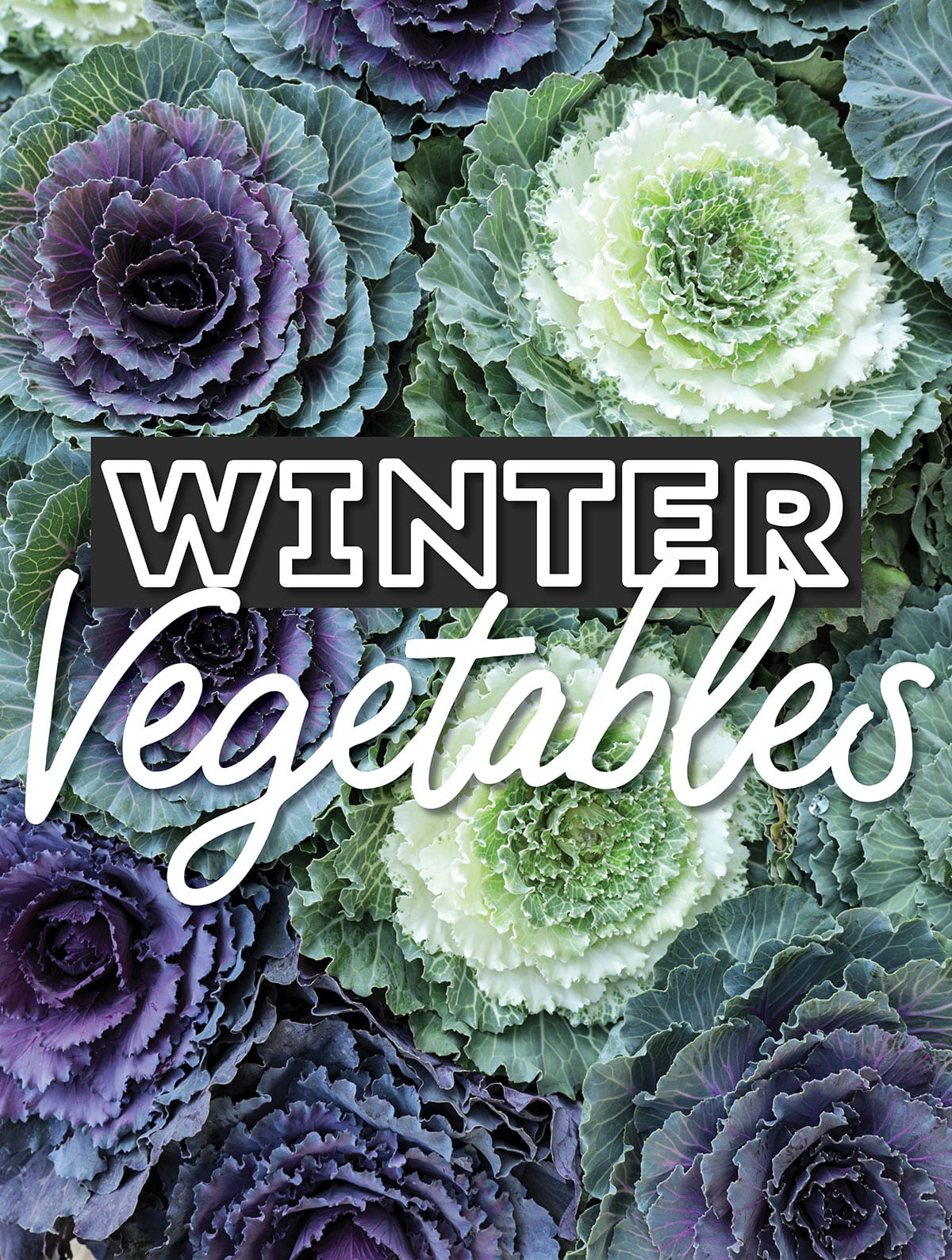
Veggie Trivia!
Alaska is known for growing gigantic vegetables due to its long summer days. How much did Alaska’s record pumpkin weigh? Scroll to the bottom of this post for the answer!
Winter vegetables cover many common vegetables as well as some lesser known ones. And despite the name, many winter vegetables are grown year-round. So, what is a winter vegetable?
What is a winter vegetable?
Vegetables technically do not have seeds, while fruit does. Because of this, many ingredients we use as vegetables are actually a fruit (think tomatoes and zucchini – both technically fruits). But, for the purposes of this article, anything that would be used as a vegetable, we consider a vegetable.
Now winter vegetables generally encompass produce that is most available or seasonally available in the winter. However, because the world is filled with various climates and commercial agriculture, many winter vegetables can be purchased all year (like spinach and kale).
Types of Winter Vegetables
- Arugula
- Avocado
- Beets
- Bok Choy
- Broccoli
- Broccoli Rabe (Rapini)
- Brussels Sprouts
- Cabbage
- Carrots
- Cauliflower
- Celery Root (Celeriac)
- Chard
- Chicory
- Chinese Cabbage (Napa Cabbage)
- Collard Greens
- Escarole
- Fennel
- Kale
- Kohlrabi
- Leeks
- Mizuna
- Mustard Greens
- Parsnips
- Peas (snow peas and sugar snap peas)
- Rutabaga
- Spinach
- Turnip
- Watercress
- Winter Squash
Arugula
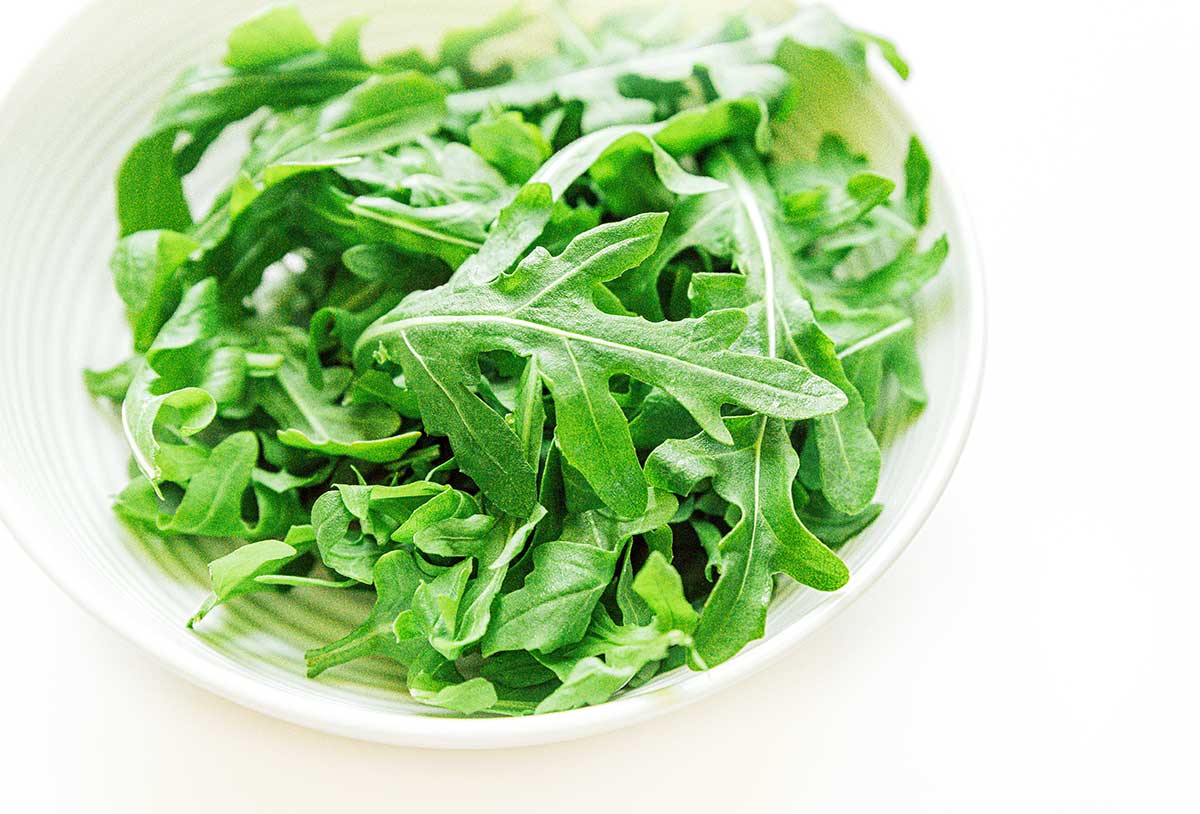
Arugula Origin and Growing Regions: Also known as rocket or roquette, arugula is believed to have originated in the Mediterranean region. It has been cultivated for centuries and is popular in European cuisine with extensive cultivation in Italy and North America. Arugula is typically a cool-season crop, and thrives from fall to spring. It can be grown in a variety of climates, both in the garden and as a potted herb.
Arugula Appearance and Taste: Arugula is characterized by its deep green, peppery leaves that resemble small, elongated oak leaves. It has a distinct, slightly spicy, and nutty flavor. The leaves are delicate and tender when young but can become more bitter as they mature.
Arugula Uses: Arugula is commonly used in salads, adding a peppery kick and a burst of freshness It complements milder lettuce variants well. It makes a great addition to sandwiches, wraps, and burgers, and has recently become a popular pizza topping, but put it on the pizza immediately after you take it out of the oven vs cooking it. Arugula also makes a great base for pesto if basil isn’t your preferred taste.
Avocado
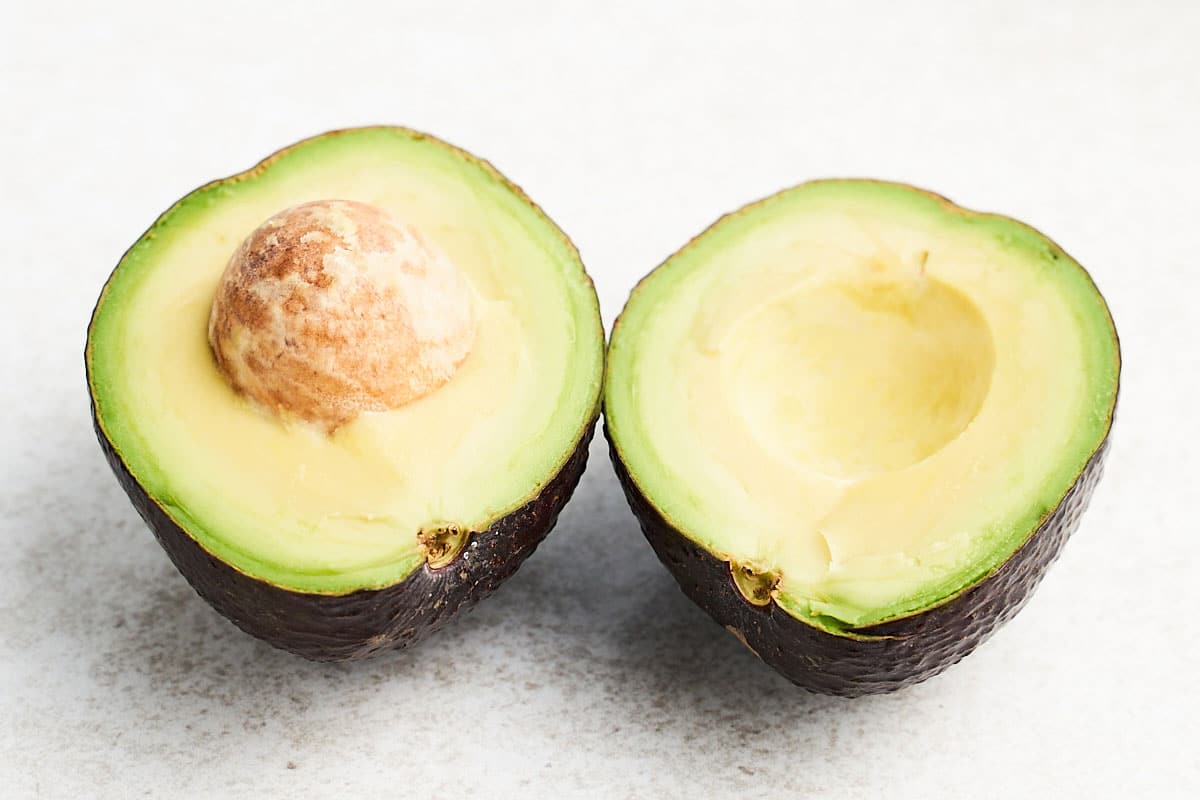
Avocado Origin and Growing Regions: Avocado is native to south-central Mexico, where it has been cultivated for thousands of years. Today, it is grown in many tropical and subtropical regions around the world. Avocado trees thrive in warm climates and are typically available year-round in these regions.
Avocado Appearance and Taste: Avocado is a pear-shaped fruit with green to black, bumpy skin. The flesh is creamy and ranges from pale green to yellow, depending on ripeness. Avocado has a rich, buttery flavor and a mild, nutty taste.
Avocado Uses: Hands down the superpower of the otherwise humble Avocado is in making Guacamole, a popular Mexican dip that took America by storm when avocado import restrictions were lifted in the USA 20 years ago or so. It is also great sliced or diced into salads or in your sandwiches.
Avocados are also a great add to smoothies as they add a healthy fat and give your smoothies a creamy texture. Include them in your sushi and even better on avocado toast for a nutritious breakfast option.
Beets
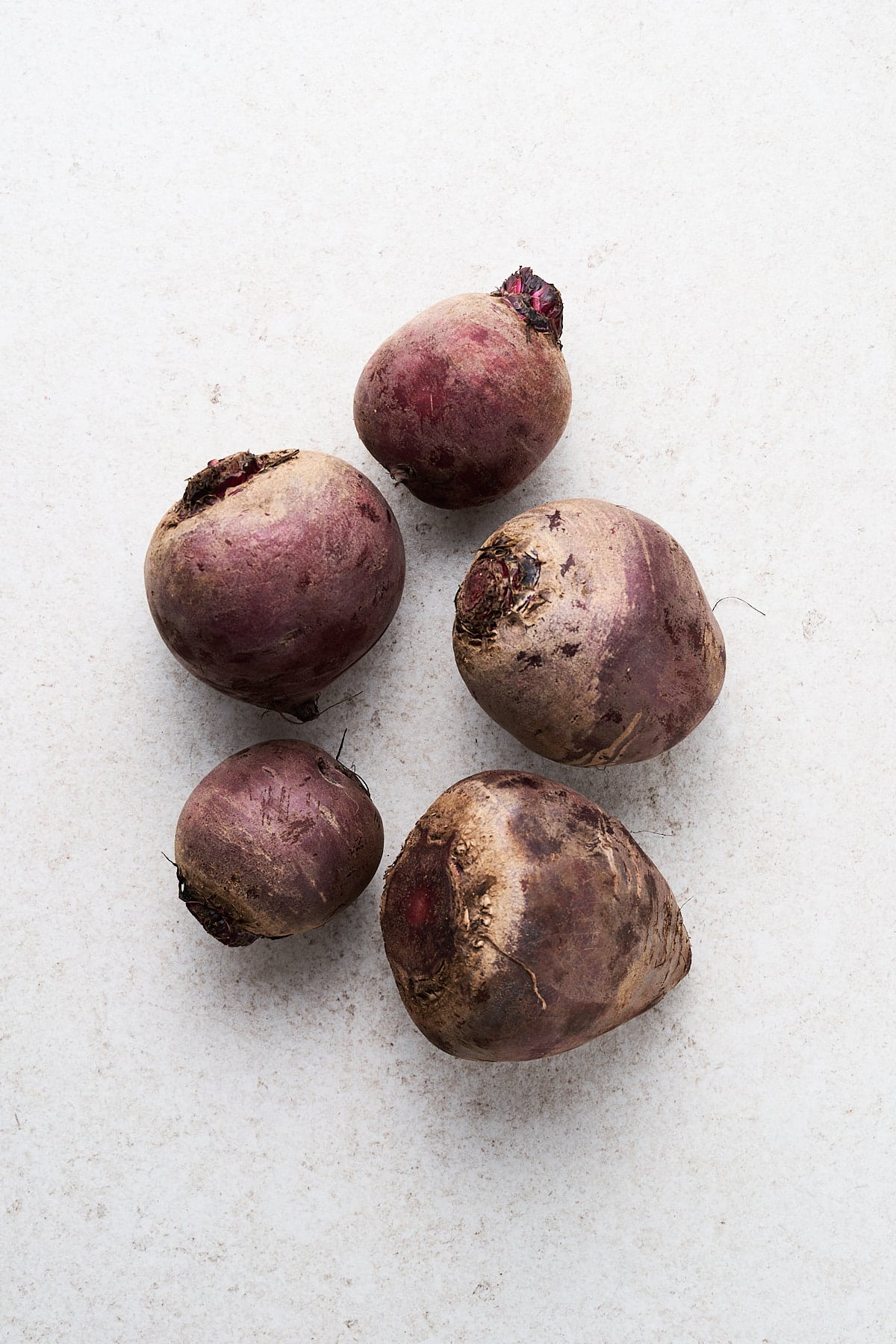
Beet Origin and Growing Regions: Beets are thought to have originated in the Mediterranean region, and are now grown across Europe, Russia, the USA, and Canada. They are a cool-season vegetable and can be grown in the spring and fall making them generally available all winter in many areas.
Beet Appearance and Taste: Beets come in various colors, including deep red, golden, and striped varieties. The edible part is the bulbous root, which has a sweet and earthy flavor. Beet greens are also edible and have a similar taste to Swiss chard or spinach.
Beet Uses: Beets are not the go to veggie for many people, and we have heard some people say they “taste like dirt”. The key is in how you cook and use them. They can be sliced or grated and added to salads for color and flavor, but roasting beets enhances their sweetness and brings out their earthy flavor. They can be used in soups like borscht, a traditional Eastern European beet soup, and you ought to try adding some cooked beets to smoothies for a nutritional boost.
Don’t think of beets as just for savory cooking. They add a great contrast for an intriguing taste in desserts like our savory apple tarts. Trust us on this one, it works and was actually developed by our chief editor who thought as a teenager that beets tasted like dirt. If you need some hints on how to cut beets, we have you covered because we prefer fresh beets vs canned which tend to have too much sodium added to preserve them.
Bok Choy
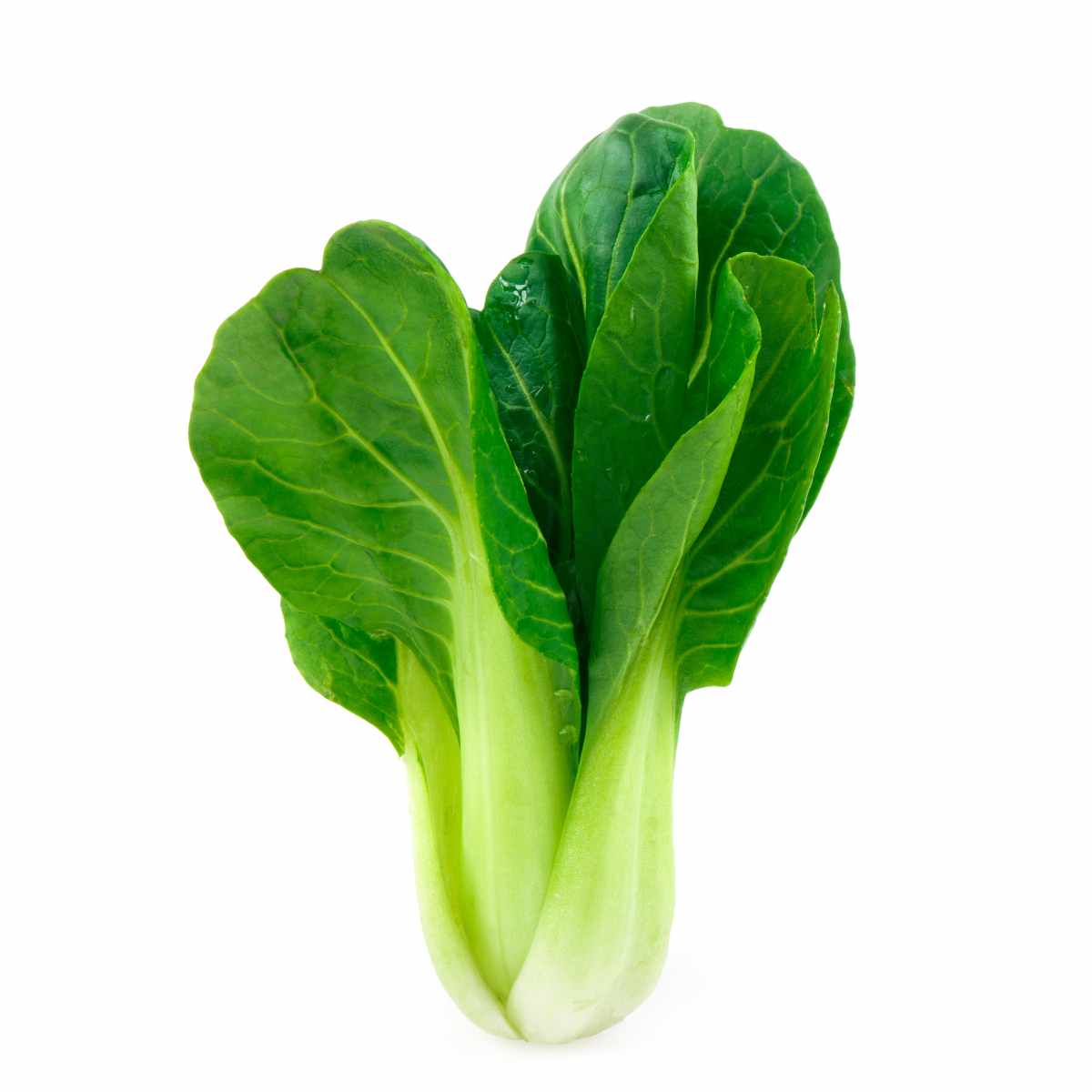
Bok Choy Origin and Growing Regions: Bok choy, a type of Chinese cabbage, has its origins in China but is now grown worldwide with heavy cultivation in China, Japan, South Korea, the Northern USA, and Canada.
Bok Choy Appearance and Taste: Bok choy has thick, white stems with dark green leaves. It has a mild, slightly peppery taste, and the leaves are tender while the stems provide a satisfying crunch.
Bok Choy Uses: Bok choy is a staple in Asian stir-fries to which it adds both flavor and texture. It can be added to soups and broths for a nutritious boost, and baby bok choy leaves can be used in salads. Consider using it steamed and served as a side dish with your favorite seasonings. Grilling bok choy gives it a smoky flavor and a slightly crispy texture. Finally, Bok choy is a common ingredient in Korean kimchi recipes.
Broccoli
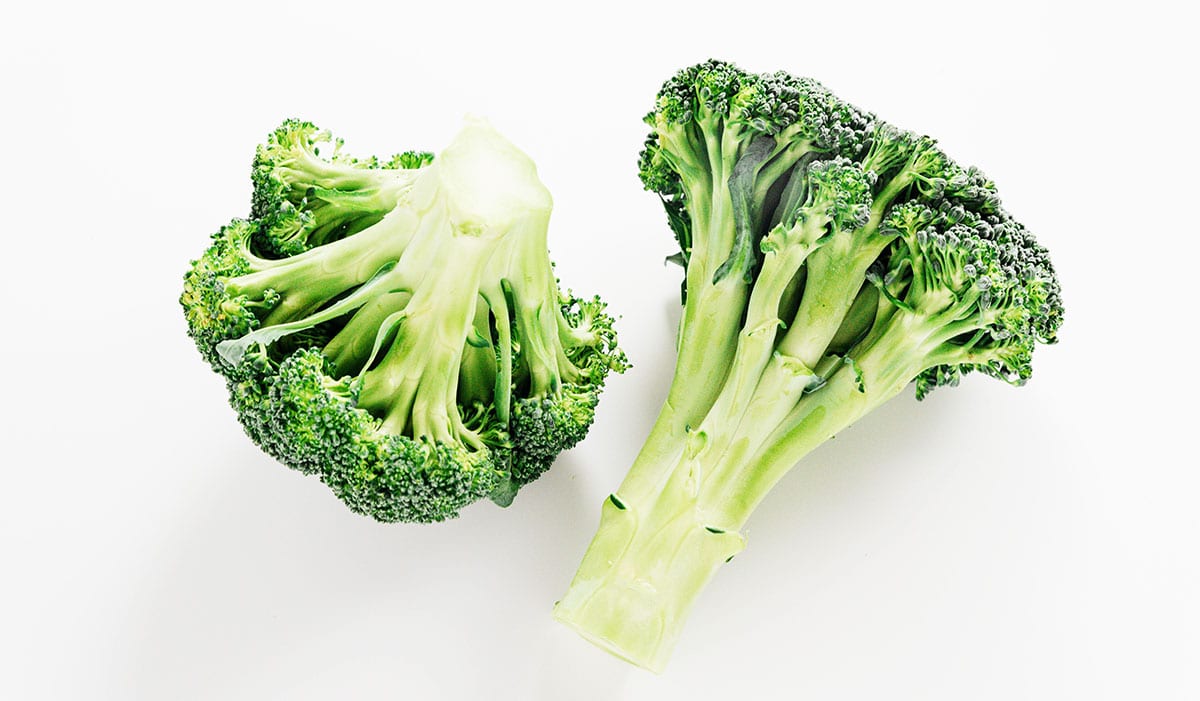
Broccoli Origin and Growing Regions: Broccoli is believed to have originated ariund the Mediterranean and has been cultivated for over 2,000 years. It is a cool-season crop growing heavily in California and across Europe. It is a veggie you can dependably get fresh throughout the winter.
Broccoli Appearance and Taste: Broccoli consists of a central stalk with green florets and leaves. It has a mild, slightly earthy flavor and a crisp texture when cooked properly. While typically found green, it is also available in an aesthetic purple variety.
Broccoli Uses: Broccoli can be steamed, or boiled and served as a simple side dish, but we much prefer roasting broccoli with olive oil and seasonings which enhances its flavor and adds a slight caramelization. To save time and energy roast broccoli in the air fryer.
Broccoli is a ubiquitous part of any veggie tray and a great salad addition, or better yet as the prime ingredient in a broccoli salad. Use broccoli liberally as it is almost off the charts nutritionally! containing more protein and fiber than you might have thought.
Broccoli Rabe (Rapini)
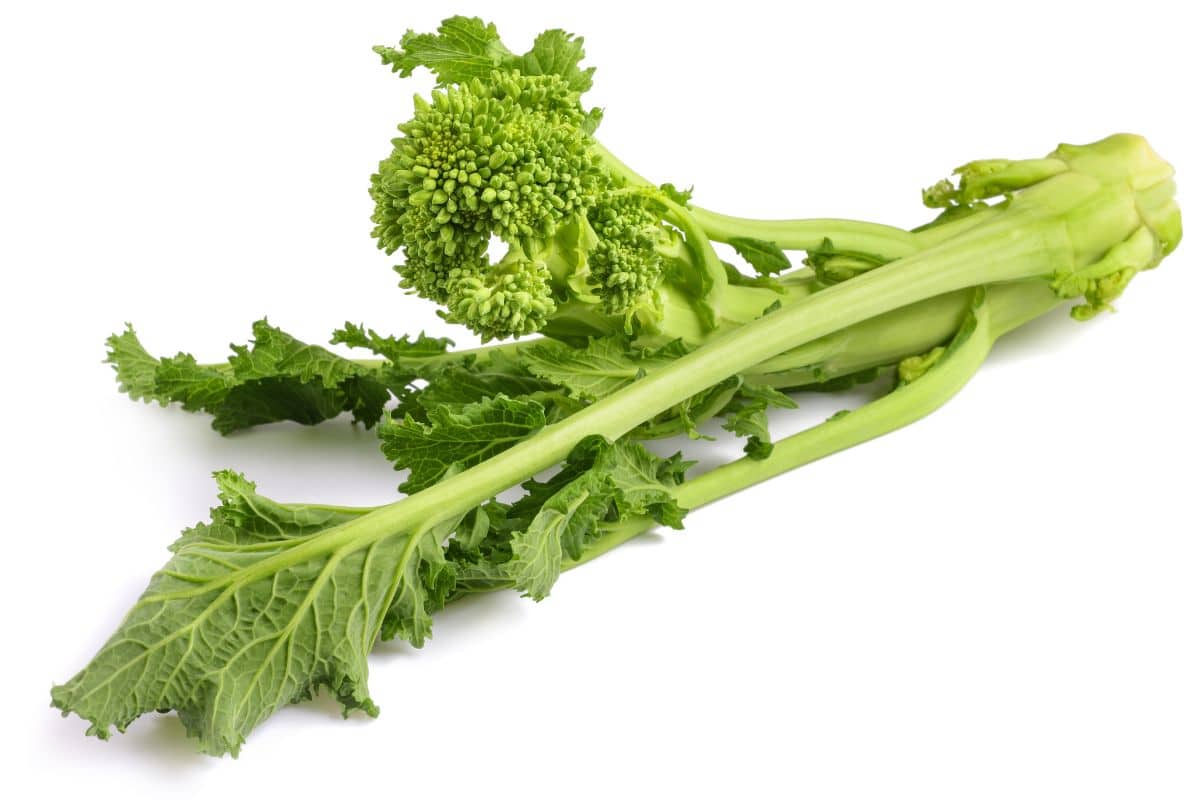
Rapini Origin and Growing Regions: Broccoli rabe, also known as rapini, is a leafy green vegetable that is associated with broccoli, but it’s actually more closely related to mustard or turnips greens. Its origins are a bit unclear. They trace back to both Italy and China. It isn’t clear if it appeared in one before the other or possibly naturally in both which is unusual. Rapini thrives in cooler climates and is commonly grown in regions with temperate climates like Europe and North America.
Rapini Appearance and Taste: Broccoli rabe has slender stalks and dark green, slightly jagged leaves. It resembles broccoli, but it has smaller florets and thinner stems. The taste of broccoli rabe is distinct and somewhat bitter, with a hint of spiciness, which makes it a unique addition to various dishes.
Rapini Uses: Broccoli rabe is a versatile vegetable that is often blanched or sautéed, and used in pasta dishes, risottos, stir-fries, and as a side dish. Its slightly bitter taste pairs well with garlic, olive oil, and red pepper flakes. It can also be added to salads, sandwiches, and pizzas for an extra layer of flavor.
Brussels Sprouts
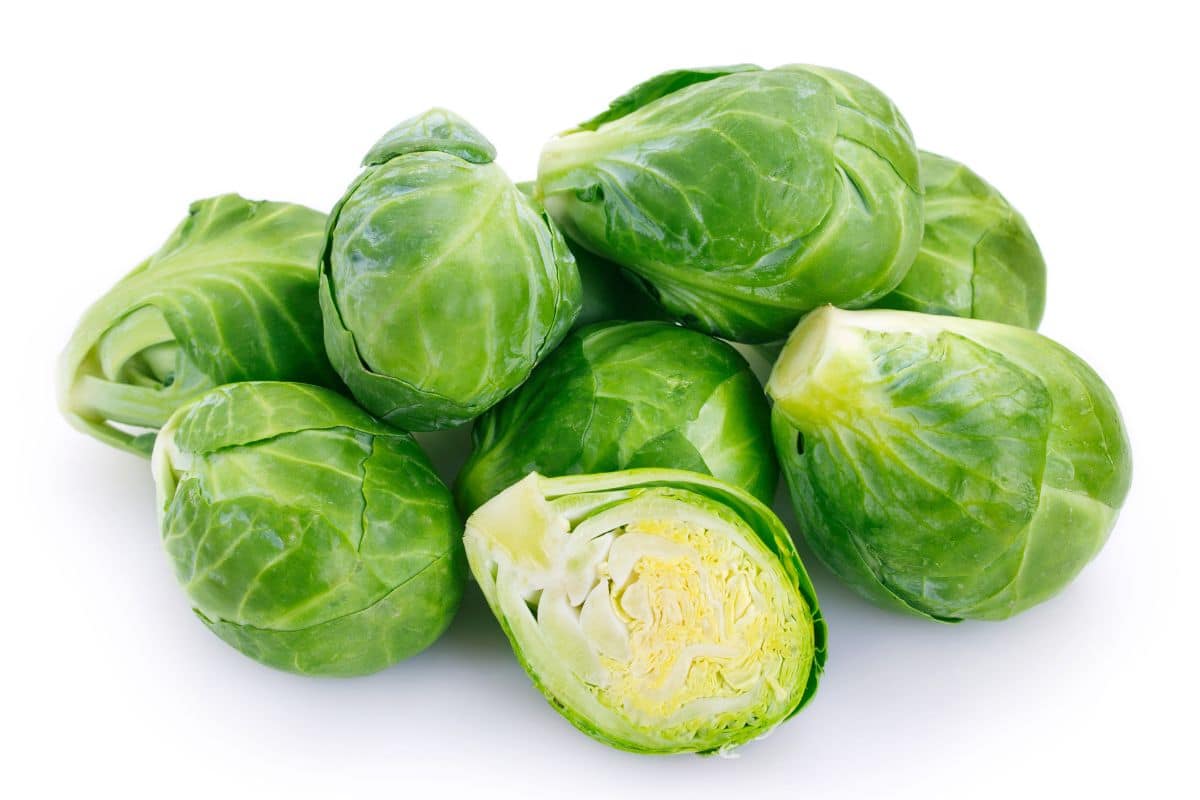
Brussels Sprouts Origin and Growing Regions: Brussels sprouts are believed to have originated in what is now modern-day Belgium, hence the name “Brussels”, the capital of Belgium. They are a cool-season vegetable and are primarily grown in regions with temperate climates, including parts of Europe, North America, and Asia.
Brussels Sprouts Appearance and Taste: Brussels sprouts grow on tall stalks and resemble mini cabbages. Each sprout is a small, round, green bud attached to the stalk. Their taste is mildly nutty and slightly sweet, although some people find them slightly bitter when overcooked.
Brussels Sprouts Uses: Brussels sprouts can be prepared in various ways, such as roasting, steaming, sautéing, or even raw in salads. Roasting brussels sprouts with olive oil and seasoning enhances their flavor and caramelizes the outer leaves, and is our hands down favorite way to cook them. You can also roast brussels sprouts in the air fryer for faster cooking but the same result. They can be served as a side dish, added to stir-fries, or used in pasta dishes. You can even use them on pizza if you are a sprouts fan. Brussels sprouts are also a good source of nutrients like vitamin C and fiber.
Cabbage
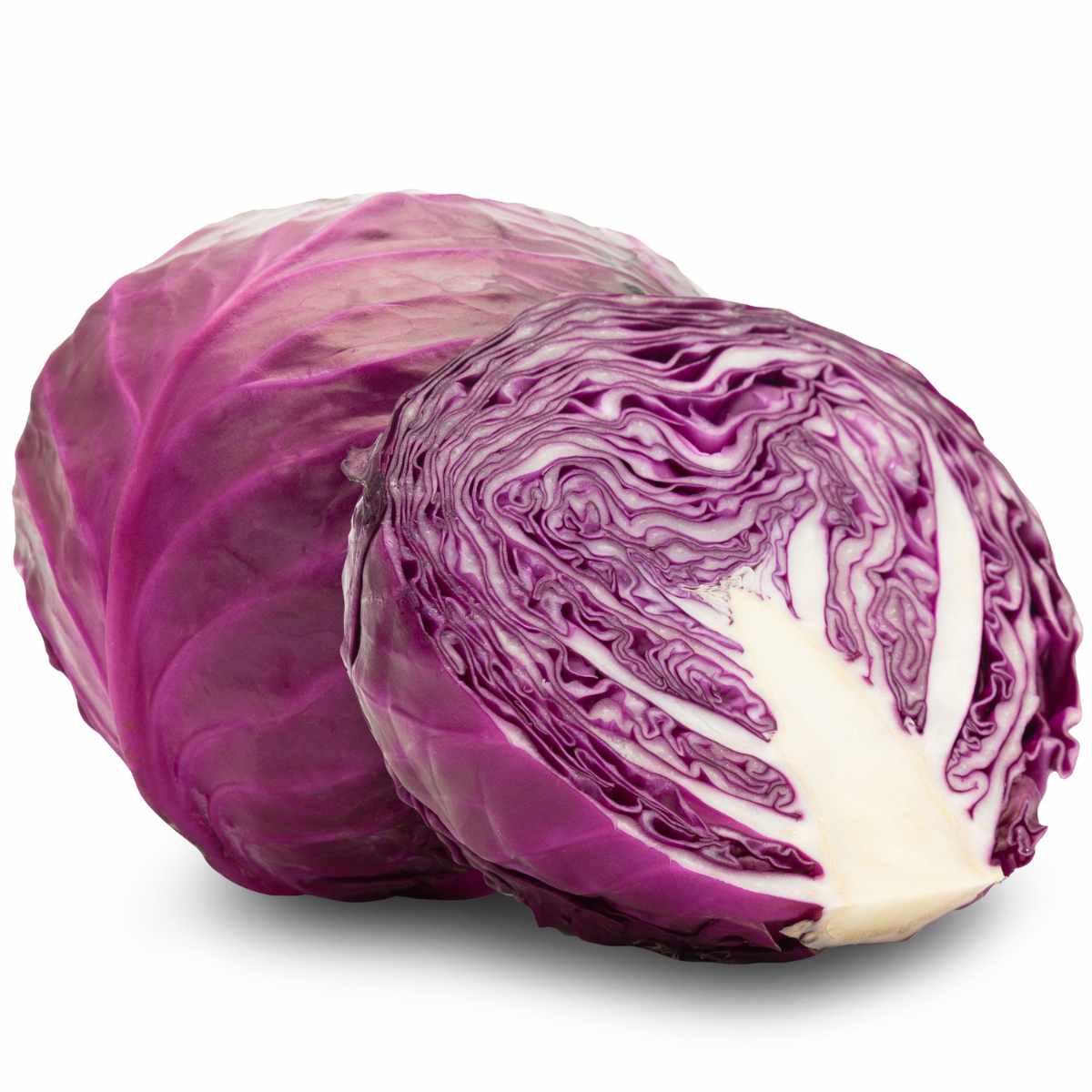
Cabbage Origin and Growing Regions: Cabbage is believed to have originated in Europe and Ancient civilizations, including the Greeks and Romans, cultivated and consumed cabbage. The Greeks considered cabbage to be a sacred plant and believed that it had medicinal properties. It’s a hardy vegetable that grows well in a wide range of climates and is cultivated in many regions worldwide.
Cabbage Appearance and Taste: Cabbage comes in various varieties, including green, red, and savoy. It has large, layered leaves that form a compact head. The taste of cabbage can vary depending on the type, but it generally has a mild, slightly peppery flavor when eaten raw. Cooking cabbage can mellow its flavor and make it tender.
Cabbage Uses: Cabbage is incredibly versatile in the kitchen. It can be used raw in salads, coleslaws, and wraps, or it can be cooked in soups, stews, pickled, stir-fries, sauerkraut, and of course homemade kimchi. You can even use cabbage leaves as wraps for stuffing. Cabbage is also a good source of vitamins C & K, potassium, and dietary fiber.
Carrots
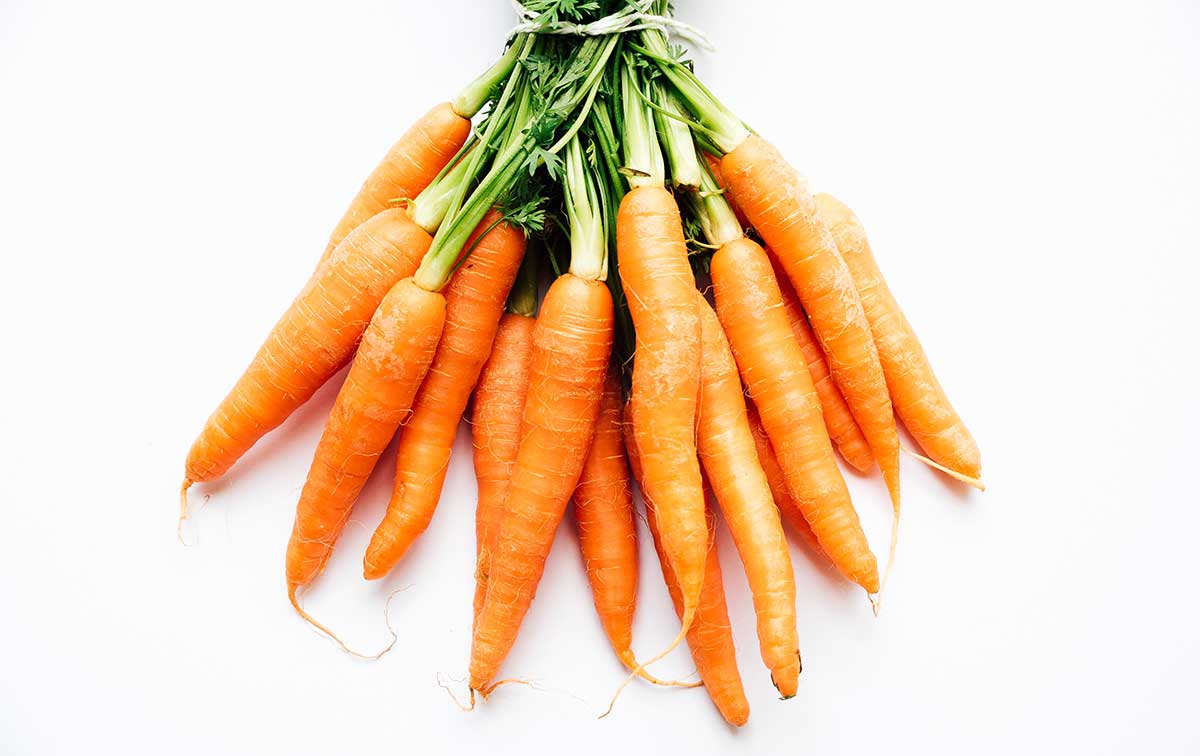
Carrots Origin and Growing Regions: Carrots are believed to have originated in the region that is now Afghanistan and were initially cultivated for their aromatic leaves and seeds. They have since spread to become a staple crop in many regions with temperate climates, including Europe, North America, and Asia.
Carrots Appearance and Taste: Carrots are known for their vibrant orange color, but they can also be found in purple, white, yellow, and red varieties. They have a sweet, crisp texture and a mild, slightly earthy flavor. Baby carrots are smaller and more tender than mature ones.
Carrots Uses: Carrots are the ubiquitous veggie on every store bought veggie tray, normally in the form of baby carrots which are really just carrots cut into small pieces. They are a crunchy snack, added to salads, or used as a dipping vegetable. They are commonly used in soups, stews, coleslaw, and stir-fries, as well as roasted or steamed as a side dish. Give them a try in glazed slow cooker carrots for a simple side dish. Carrots are rich in beta-carotene, which is converted into vitamin A in the body and is essential for overall health.
Cauliflower
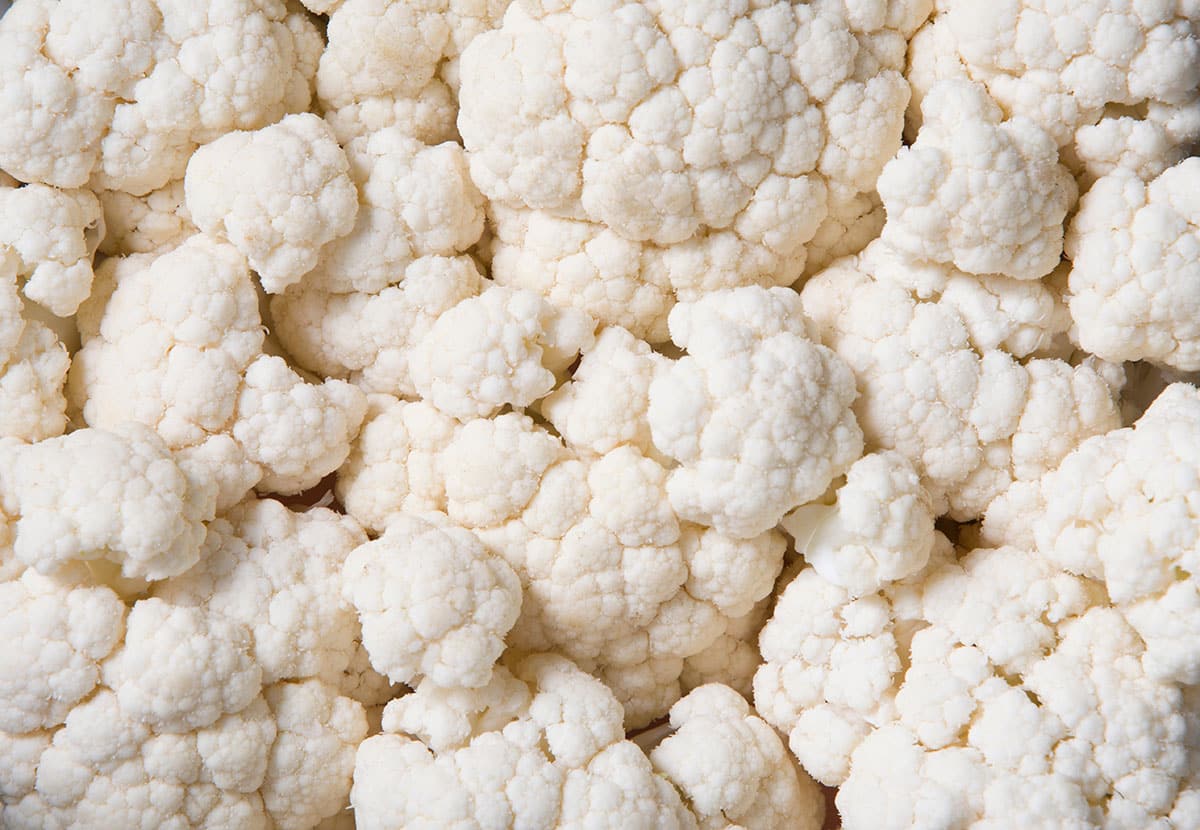
Cauliflower Origin and Growing Regions: Cauliflower is thought to have originated in the Mediterranean region, and has been cultivated for thousands of years. It is grown in various parts of the world, including Europe, Asia, and North America.
Cauliflower Appearance and Taste: Cauliflower has a distinctive appearance with a dense head composed of tightly packed florets. The color of the head can range from pure white to purple, green, or orange, depending on the variety. Green cauliflower, also called Romanesco, is visually quite stunning and can occasionally be found in your local grocery store. Cauliflower has a mild, slightly nutty flavor and a tender texture when cooked.
Cauliflower Uses: Cauliflower is a versatile vegetable that can be used in a variety of dishes. It’s commonly used to make cauliflower rice, mashed cauliflower (a low-carb alternative to mashed potatoes), and cauliflower pizza crust. It can also be roasted, air fried, steamed, pickled, boiled, or added to curries and soups.
Cauliflower is a great source of vitamins C and K, as well as fiber. Incorporating these vegetables into your diet can not only add a burst of flavor and variety to your meals but also provide essential nutrients and health benefits.
Celery Root (Celeriac)
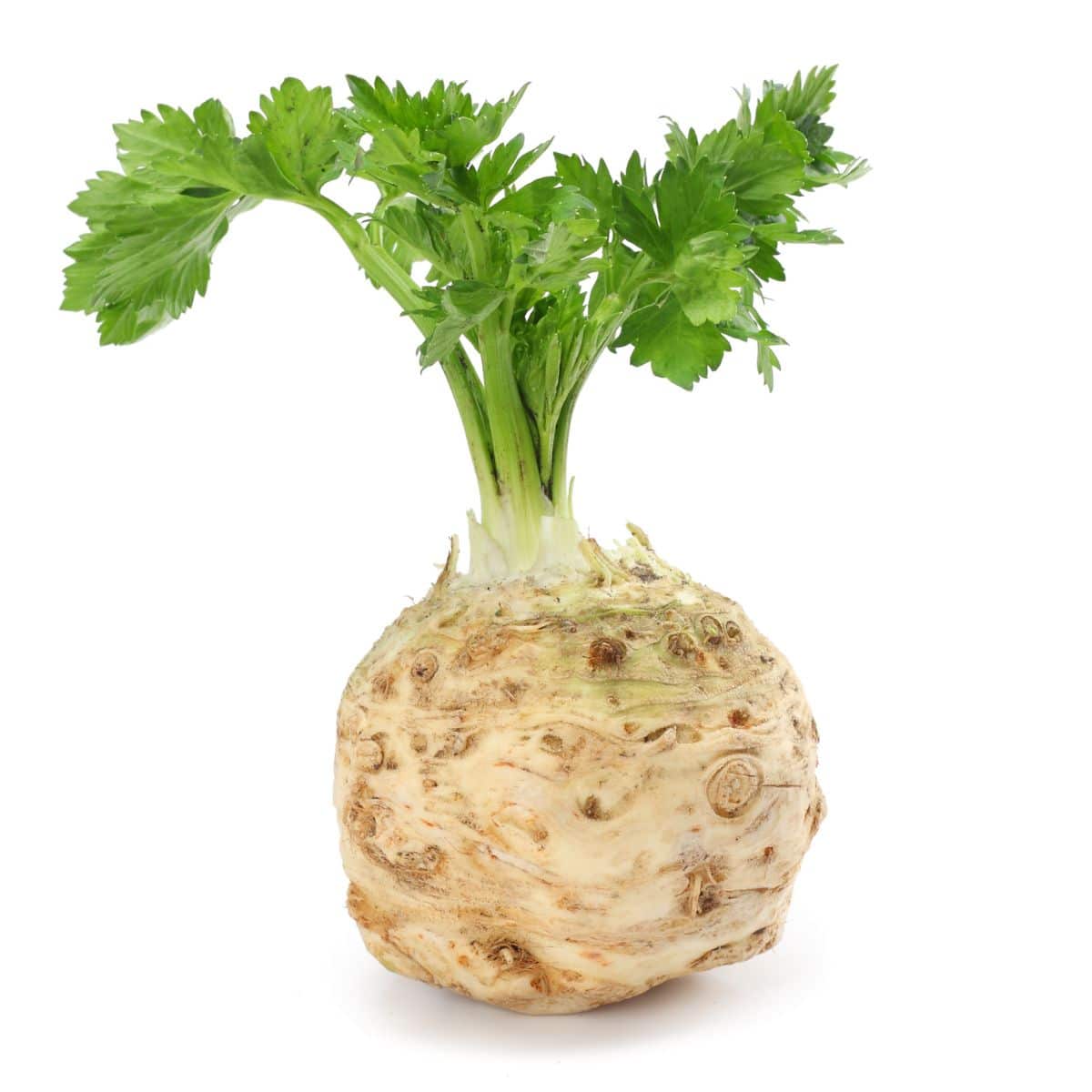
Celery Root Origin and Growing Regions: Celery root, also known as celeriac, is a variety of celery cultivated for its edible root rather than its stalks or leaves. It originated in the Mediterranean region and is now grown in various parts of the world to include Europe, North America, and parts of Asia.
Celery Root Appearance and Taste: Celery root is a knobby, bulbous root vegetable with a rough, brownish outer skin that needs to be peeled before consumption. The flesh inside is creamy white and has a mild, earthy, and nutty flavor, reminiscent of both celery and parsley. It has a crisp texture when raw, but when cooked, it becomes tender and develops a sweeter taste.
Celery Root Uses: Celery is often used in soups, stews, and mashed potato dishes to add a unique flavor and creaminess. It can also be grated or julienned and used in salads or coleslaw, adding a crunchy texture and a mild celery flavor. Roasting or frying celeriac can bring out its sweetness and create a delicious side dish. Some people even use it to make celeriac puree, which is a creamy and lower-carb alternative to mashed potatoes.
Chard
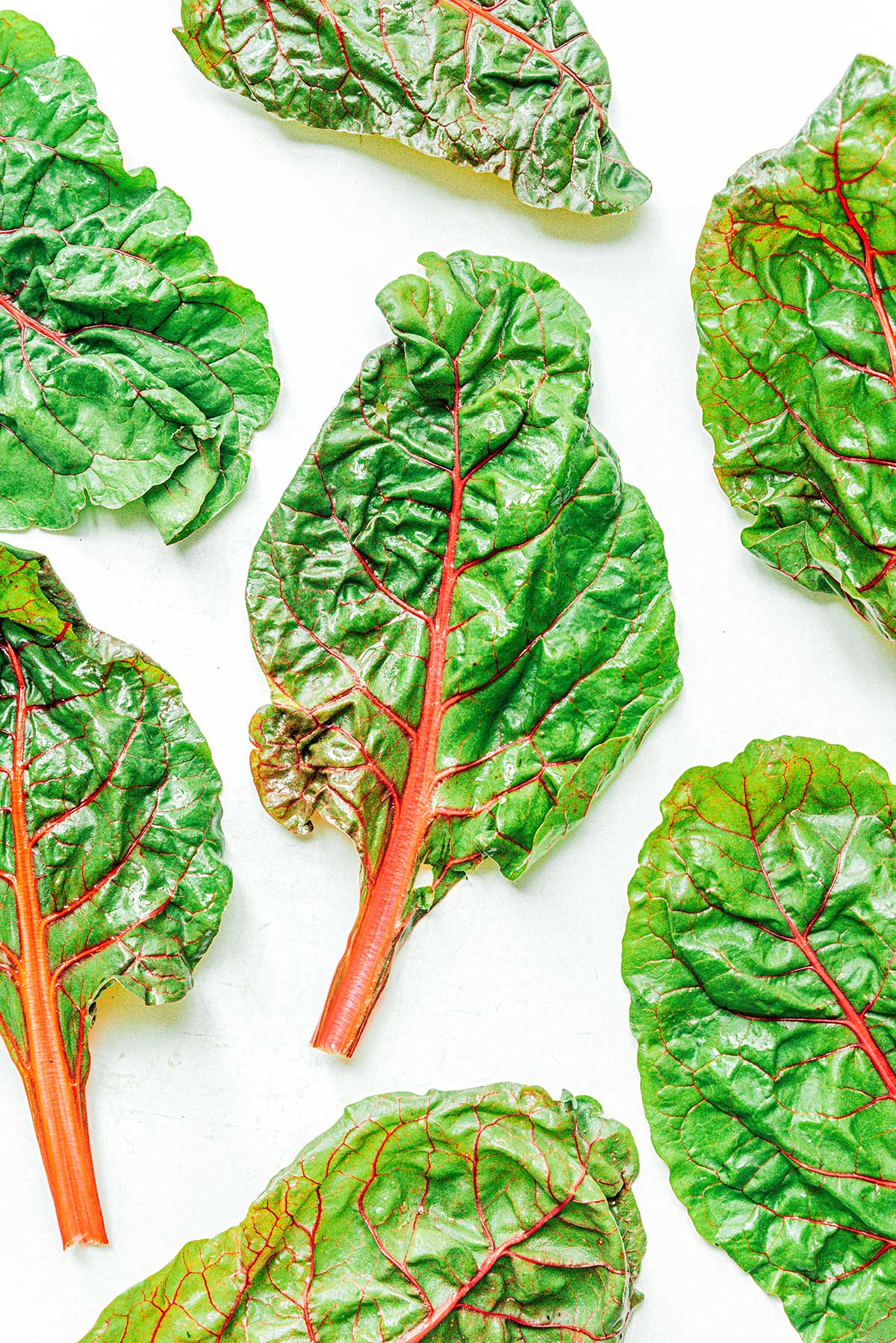
Chard Origin and Growing Regions: Chard has Mediterranean origins and has been cultivated for centuries. It is now grown in temperate climates worldwide.
Chard Appearance and Taste: Chard features vibrant, colorful stems in hues of red, yellow, or white, and large, dark green, or rainbow-colored leaves.The flavor of chard leaves is slightly bitter and earthy, reminiscent of spinach or beet greens. The stems are milder in flavor and have a crunchy texture.
Chard Varieties: There are five main varieties of Chard.
- Green: Green chard is the most common variety. This version is mild in taste and works well in any dish that calls for greens!
- Rainbow: Also called “bright lights” chard, this multi-colored variation features pink, yellow, orange, and red stalks. It’s one of the most colorful veggies! The leaves are firm and the taste is muted and earthy.
- Red: Red chard has green leaves but deep red or purple stalks. It’s often referred to as Swiss chard, but don’t be fooled — it doesn’t come from Switzerland!
- Barese: Barese chard features green leaves and white stems. This type of chard can be eaten early (as baby leaves), or at full harvest.
- Orange Fantasia: Orange chard is just what you’d expect – green leaves with orange stems! This variation grows to nearly 20 inches tall and keeps its bright color when cooked!
Chard Uses: Chard leaves can be used in a variety of ways, including sautéing, steaming, or boiling, and are often used as a spinach substitute in recipes. The colorful stems can be chopped and used in stir-fries, soups, omelets, quiches, or salads. Our favorite use, however, is in chard wraps where they make a healthy substitute for tortillas.
Chicory
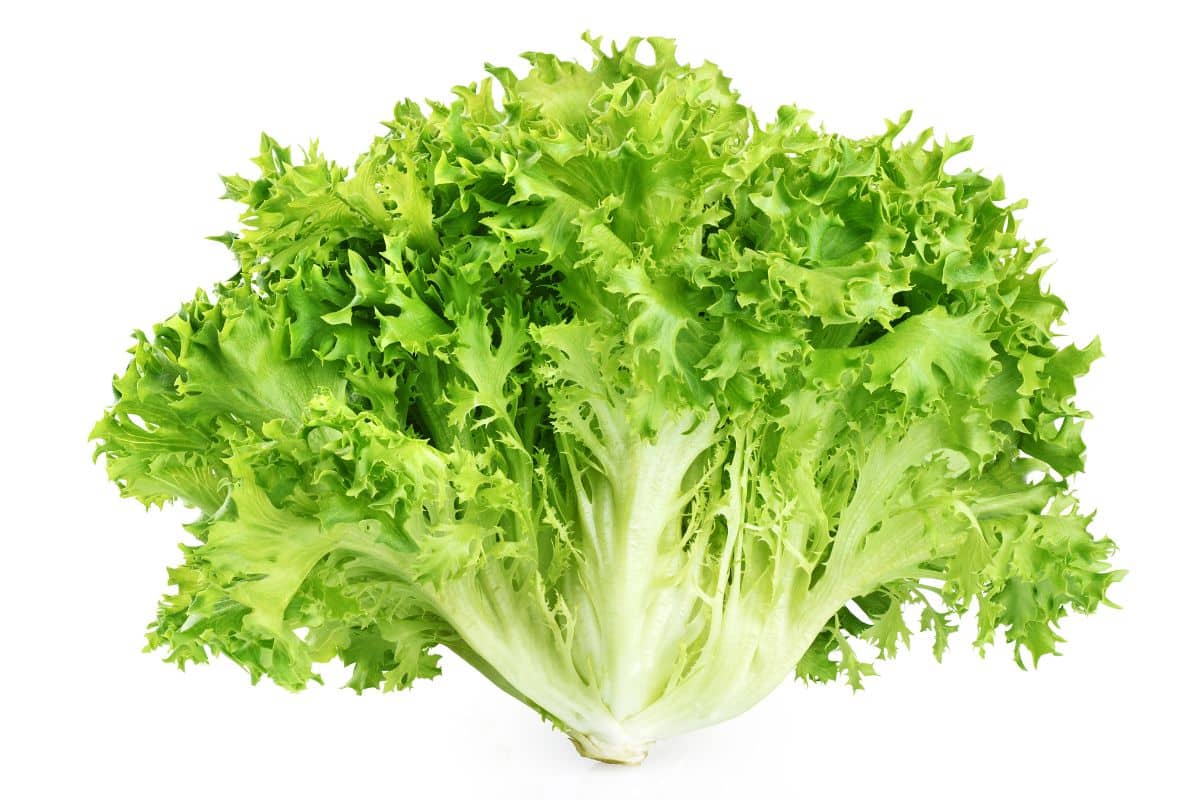
Chicory Origin and Growing Regions: Chicory is native to Europe and Western Asia, but it’s now cultivated in many parts of the world. It has several varieties, including Belgian endive, radicchio, and curly endive (frisée).
Chicory Appearance and Taste: Chicory varies in appearance depending on the variety. Belgian endive is pale with tightly packed leaves, while radicchio has deep red or purple leaves. The taste of chicory can range from mildly bitter to quite bitter, and it has a crisp texture.
Chicory Uses: Chicory is often used in salads to add a bitter contrast to other greens and ingredients. Belgian endive is frequently used in appetizers and salads. It can be grilled, roasted, or in various dishes like endive gratin. Radicchio can be used in salads, grilled, or added to pasta dishes for its distinct flavor and color.
Chinese Cabbage (Napa Cabbage)
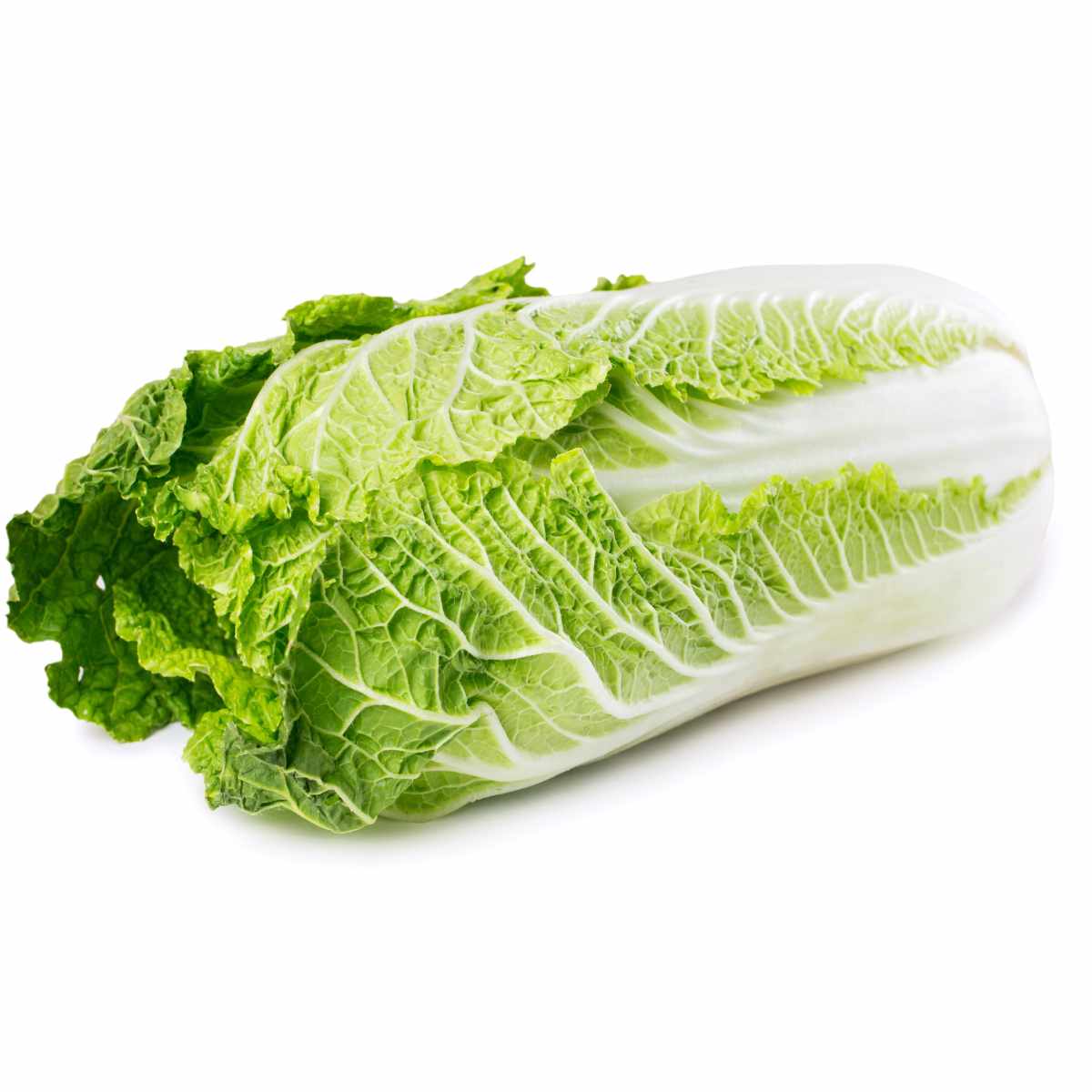
Napa Cabbage Origin and Growing Regions: Napa cabbage, or Chinese cabbage, is a staple in East Asian cuisine and is believed to have originated in China. It’s widely grown in East Asia and is also cultivated in other parts of the world, including North America.
Napa Cabbage Appearance and Taste: Napa cabbage has long, pale green leaves with white stems and a mild, slightly sweet flavor. The leaves are tender and crisp, and they have a mild cabbage taste.
Napa Cabbage Uses: Napa cabbage is commonly used in stir-fries, soups, and of course kimchi, a traditional Korean fermented cabbage dish. It can be added to salads for its crunchy texture and mild flavor. The leaves can also be used as wrappers for dumplings or spring rolls.
Collard Greens
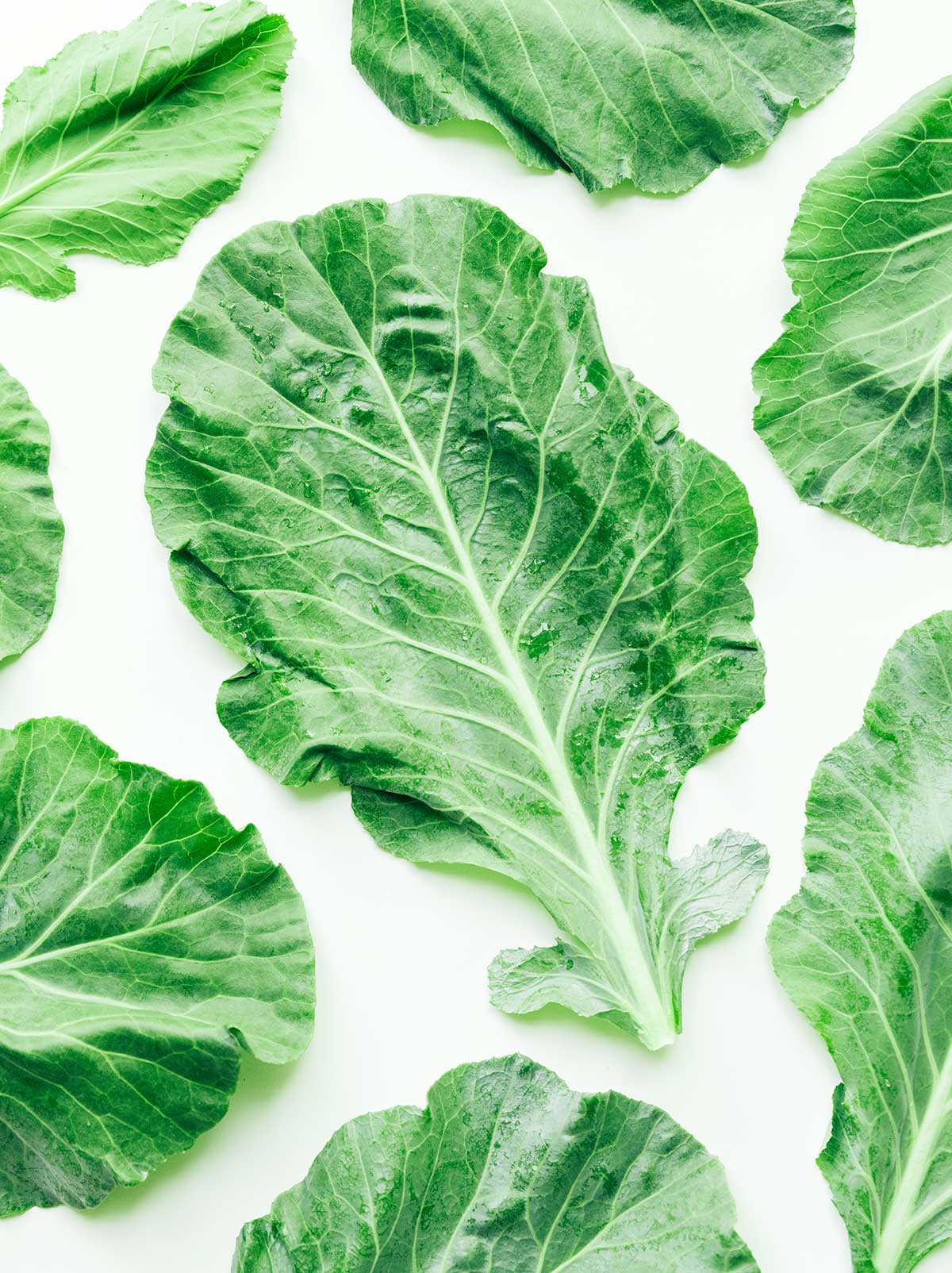
Collard Greens Origin and Growing Regions: Collard greens are native to the Mediterranean region around Greece and have been cultivated for thousands of years. They found their way to Africa and were introduced to America by slave traders who brought them with their elicit cargoes because collards were a staple in the Africa diet. They are grown in many regions today, including the southern United States, Africa, and parts of Europe.
Collard Greens Appearance and Taste: Collard greens have large, dark green, and slightly bitter leaves. When cooked, they have a tender texture and a mild, earthy flavor.
Collard Greens Uses: Collard greens are a staple in Southern cuisine, where they are typically slow-cooked with ham hocks, bacon, or other seasonings. They can also be used in soups and stews or sautéed with garlic and olive oil. They are great as wraps as the fibrous leaves hold up well with fillings, and are a low calorie, high fiber alternative to tortillas. Collard greens are nutritious and can be a healthy addition to your diet when prepared with minimal added fats and sodium.
Escarole
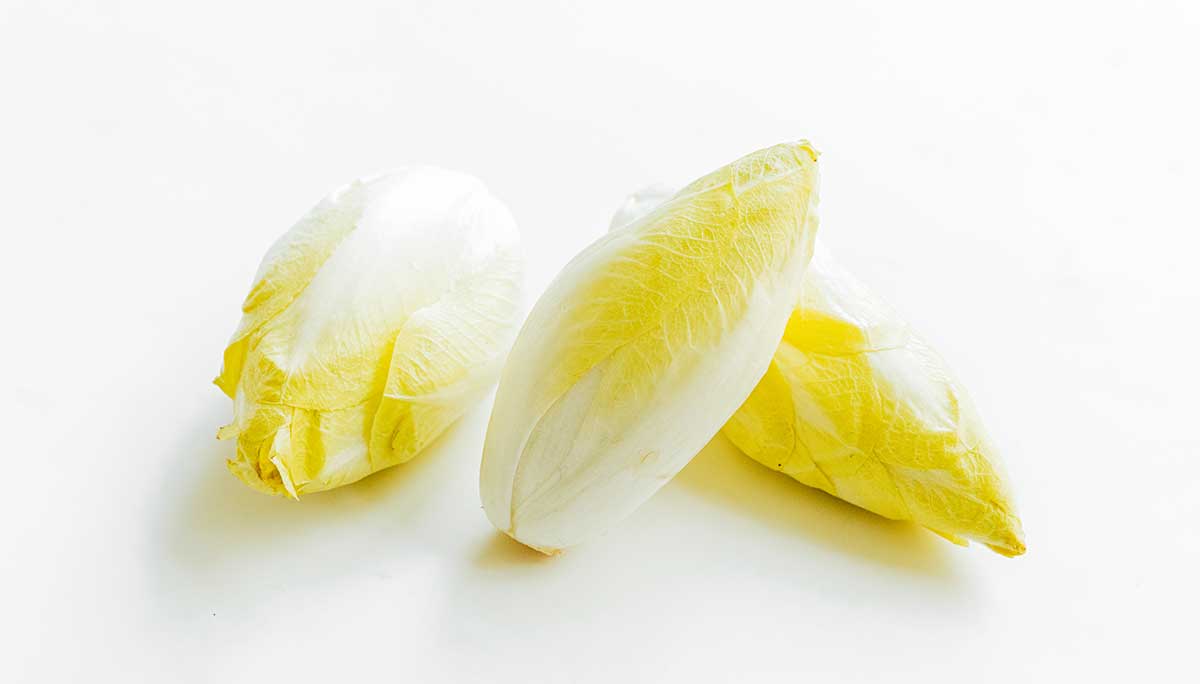
Escarole Origin and Growing Regions: Escarole, also known as Batavian endive, is a leafy green vegetable that belongs to the chicory family. It is native to the Mediterranean region, likely from the Island of Sicily, and has been cultivated for centuries. Escarole grows well in temperate climates and is commonly found in regions across Europe, North America, and Asia.
Escarole Appearance and Taste: Escarole has broad, curly leaves that resemble lettuce but are slightly more substantial. The leaves are typically pale green on the outside and can range from light to yellow-green on the inside. Escarole leaves are crisp, but have a slightly bitter flavor. They are milder, however, compared to other chicory greens like endive or radicchio. The inner leaves tend to be less bitter and have a milder, nutty taste. The outer leaves may be a bit tougher and more bitter.
Escarole Uses: Escarole is often used in salads, either mixed with other greens or as the primary leafy base. Its slightly bitter taste adds contrast to other salad greens. Escarole can be sautéed, steamed, or braised. Cooking helps mellow its bitterness. It pairs well with garlic, olive oil, and lemon juice. Escarole is also a common ingredient in Italian wedding soup and other hearty soups, adding both flavor and texture. Finally, in some regions escarole is used as a pizza topping, especially in combination with garlic and red pepper flakes. We would recommend adding it to pizza at the end of cooking like you would arugula.
Fennel
Fennel Origin and Growing Regions: Fennel is yet another winter vegetable with its origins in the Mediterranean region. It has been cultivated and used in culinary applications for thousands of years. Fennel is grown in various parts of the world, including Europe, Asia, and North America. It thrives in mild climates and well-drained soils.
Fennel Appearance and Taste: Fennel is a unique-looking vegetable with a bulbous, white or pale green base, long stalks, and feathery green fronds. The bulb at the base is the most commonly used part in cooking. Fennel has a distinct anise or licorice-like flavor, which is milder when cooked. The bulb is crisp and mildly sweet, while the fronds have a more intense anise flavor.
Fennel Uses: Fennel can be sliced thinly and added to salads for a crisp, refreshing crunch and a hint of anise flavor. When cooked, fennel becomes tender and loses some of its licorice-like intensity. It can be roasted, sautéed, or braised as a side dish or used as an addition to pasta dishes. Fennel adds a unique flavor to soups and stews. It’s often used in Mediterranean cuisine, such as in Italian sausage and fennel soup.
Fennel’s best uses are as an herb derived from the dried seeds of the fennel plant. They are a common spice used in a variety of dishes, including sausages, bread, pickles, and sides like these marinated olives.
Kale
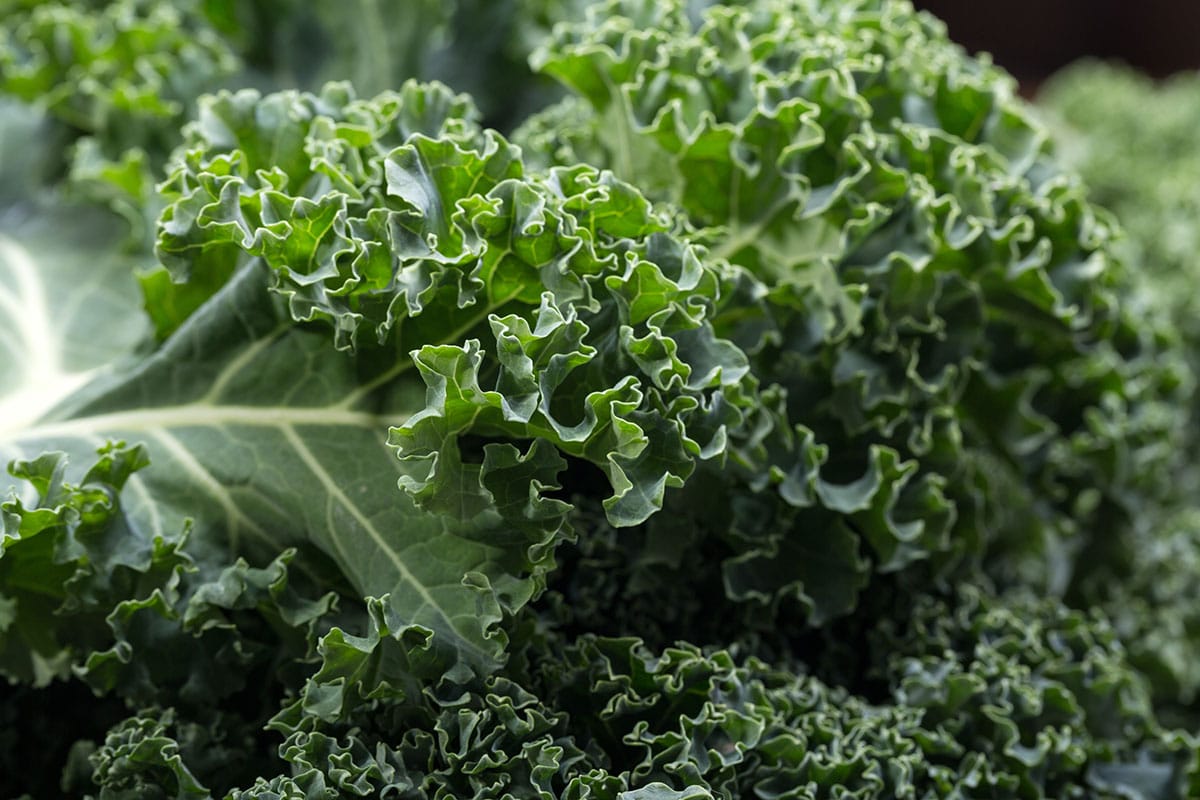
Kale Origin and Growing Regions: Kale is believed to have originated in the eastern Mediterranean and Asia Minor region (modern day Turkey). It is a hardy, cold-tolerant leafy green that can be grown in various climates. Kale is commonly cultivated in North America, Europe, and parts of Asia.
Kale Appearance and Taste: Kale has dark green, curly or flat leaves that grow in loose bunches. There are different varieties, including curly kale, lacinato (or dinosaur) kale, and red kale. The taste of kale can vary depending on the type and maturity. Generally, it has a slightly bitter, earthy flavor with a hint of peppery spiciness. Younger leaves tend to be milder, while mature leaves can be more robust and bitter.
Kale Uses: Young Kale leaves are often used in salads, adding a crunchy texture and a peppery bite. They are also a great add blended into smoothies for added nutrition. Mature kale leaves are commonly used in soups and stews, as they hold up well to cooking and add a hearty texture. Kale leaves can be baked or air-fried to make crispy kale chips, a healthier alternative to potato chips. Kale can be sautéed or steamed as a side dish or used as a bed for proteins like fish or chicken. You can generally substitute kale for spinach in recipes though their taste is a bit different.
Kohlrabi
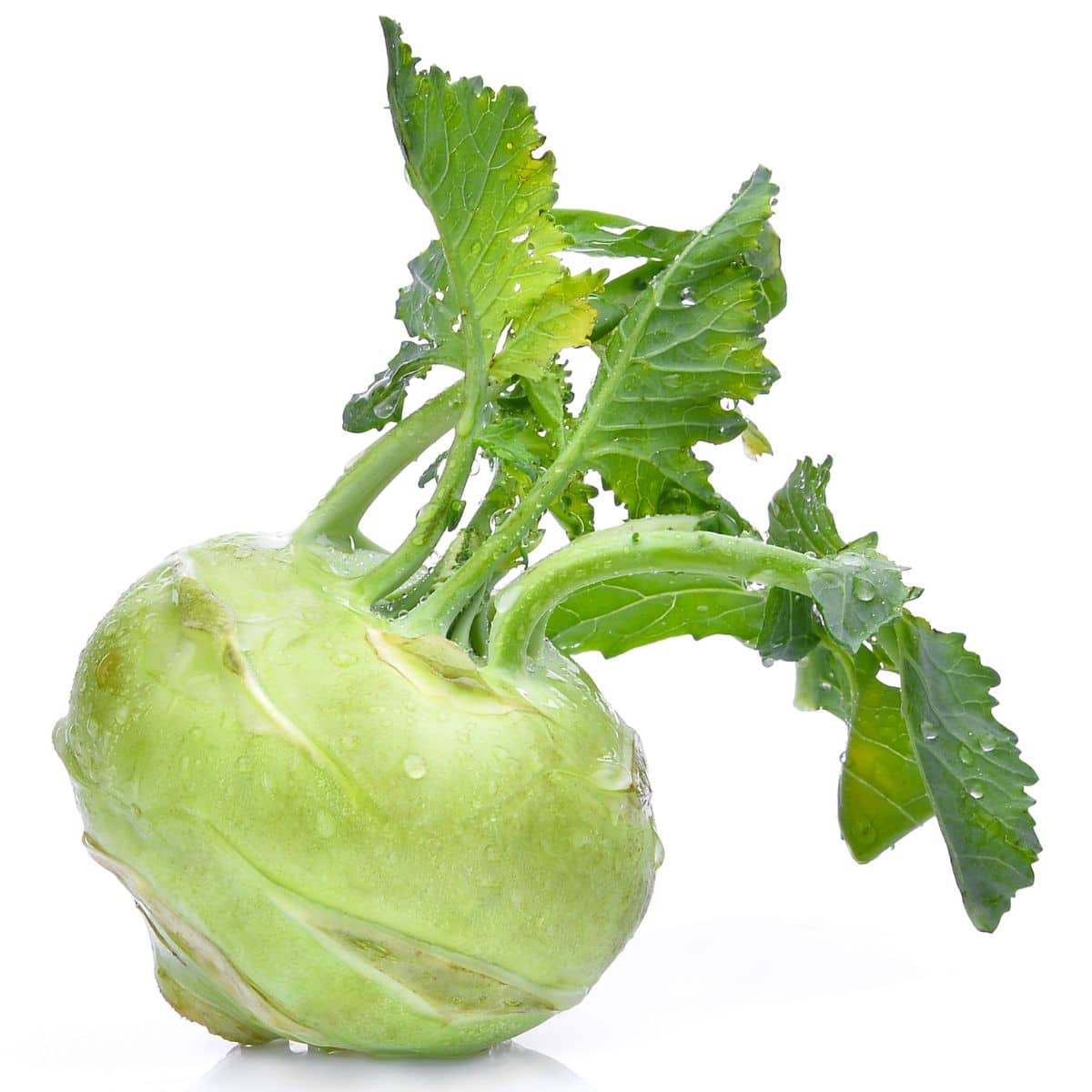
Kohlrabi Origin and Growing Regions: Kohlrabi is native to Europe, and is more prevalent in European grocery stores than in the USA. It is grown in various parts of the world today, including Europe, Asia, and North America.
Kohlrabi Appearance and Taste: Kohlrabi has a unique appearance with a round, bulbous stem that grows just above the ground. It can be white, light-green, or purple. The taste of kohlrabi is often described as a cross between a mild cabbage and a turnip. It has a subtle, sweet, and slightly peppery flavor. Both the bulb and leaves are edible, but the bulb is quite hard and can be difficult to cut.
Kohlrabi Uses: It can be sliced or julienned and eaten raw in salads, slaws, or as a crunchy snack with dip. Kohlrabi can be boiled, steamed, roasted, or stir-fried. It becomes tender and takes on a sweeter flavor when cooked. It can be added to soups or stews for a unique flavor and texture, or mashed like potatoes or mixed with mashed potatoes for a lighter side dish.
Leeks
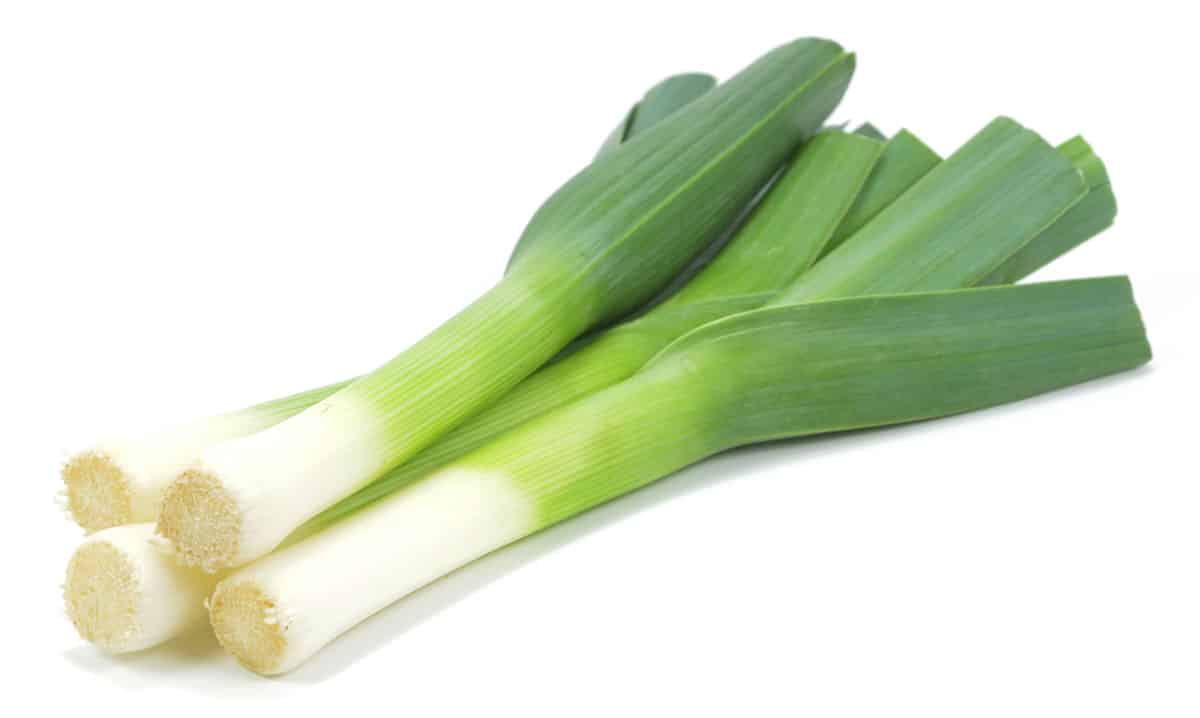
Leeks Origin and Growing Regions: Leeks originated in Central Asia, and were eaten by the Ancient Greeks and Romans. They are widely grown in various temperate regions around the world with Indonesia, Turkey, and Belgium being the three largest producers. That is certainly a geographically dispersed trio.
Leeks Appearance and Taste: Leeks look like oversized green onions with a long, cylindrical white or pale green stalk and dark green leaves at the top. Their flavor is milder and sweeter compared to onions, with a subtle hint of garlic. The white and light green parts are the most commonly used in cooking.
Leeks Uses: Leeks are a key ingredient in dishes like potato leek soup and various stews, adding a mild onion-like flavor. Sautéed, roasted, or grilled leeks make a delicious side dish or topping for meats, fish, or pasta. They can be incorporated into savory pies, quiches, and tarts.
Mizuna
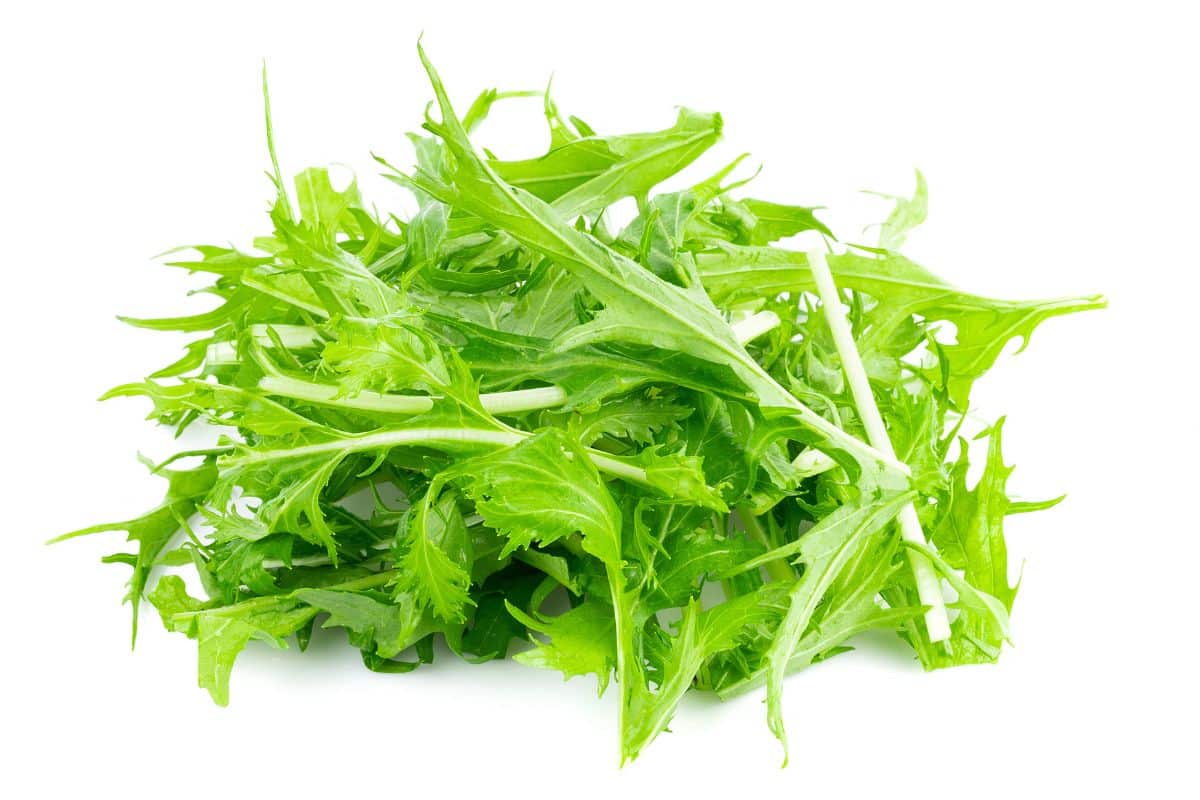
Mizuna Origin and Growing Regions: Mizuna is a leafy green vegetable that belongs to the Brassicaceae family, which includes cabbage, broccoli, and mustard. It is native to Japan and is commonly found in Japanese cuisine. Mizuna has a long history of cultivation in Asia, particularly in China and Korea. Mizuna is now grown in various regions around the world, but it thrives in cool, temperate climates. It is often grown in North America, Europe, and Asia, with Japan and California being significant producers.
Mizuna Appearance and Taste: Mizuna has feathery, serrated leaves that are dark green and slightly fringed. The leaves form loose rosettes, and the plant typically reaches a height of 8-10 inches (20-25 cm). The taste of Mizuna is mild and slightly peppery, with a hint of spiciness.
Mizuna Uses: Mizuna is often used as a fresh ingredient in salads, where its mild, slightly peppery flavor adds a pleasant kick. It can be stir-fried with other vegetables and protein sources to create flavorful, Asian-inspired dishes. Mizuna leaves can be used as a garnish for various dishes, including sushi and sashimi, and some Asian soups incorporate Mizuna for its unique flavor and nutrient content. Finally, it can be used as a nutritious leafy green in sandwiches and wraps.
Mustard Greens
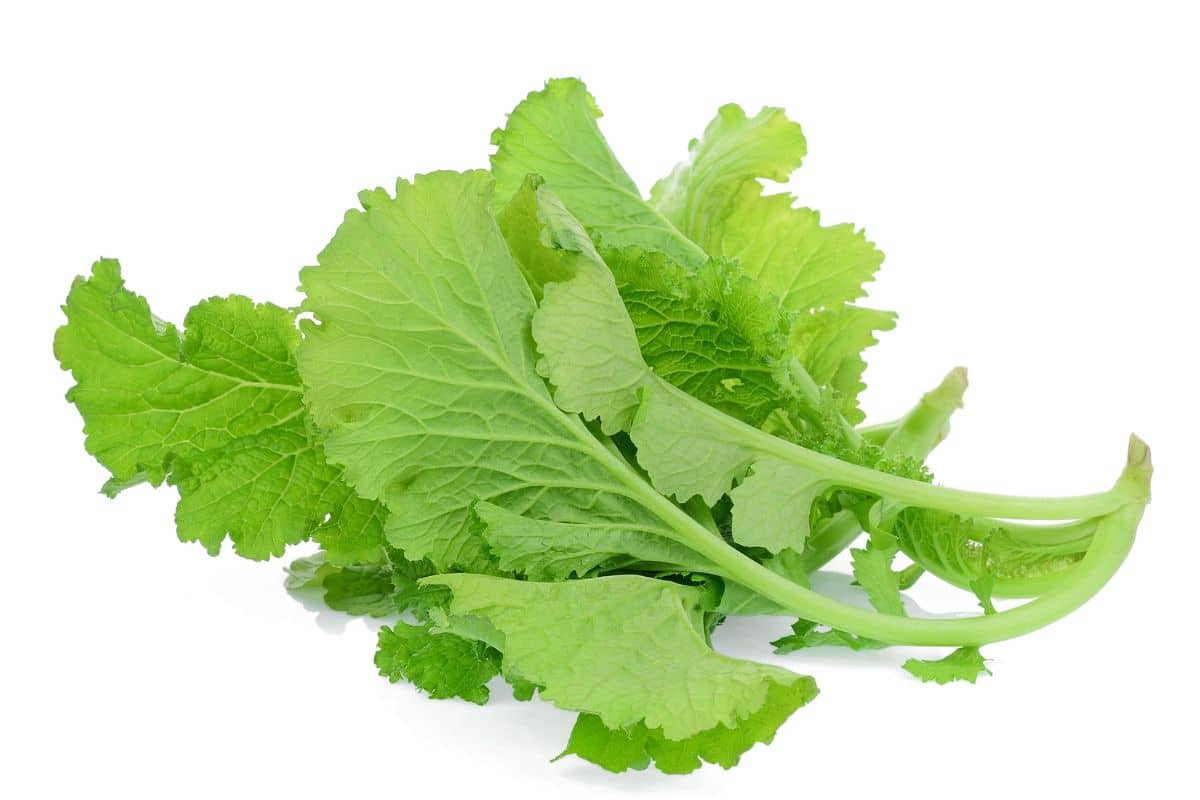
Mustard Greens Origin and Growing Regions: Mustard greens, part of the Brassicaceae family, have a long history of cultivation dating back to ancient civilizations, including the Romans and Greeks. They are believed to have originated in the Himalayan region, and have been grown and consumed in various forms across Asia, Europe, and the Americas. Mustard greens can be grown in a wide range of climates but prefer cool temperatures. They are cultivated in many parts of the world, including the United States, India, China, and Europe.
Mustard Greens Appearance and Taste: Mustard greens come in various varieties, but they typically have deep green leaves with jagged or frilly edges. The taste can range from mild and slightly peppery in young leaves to intensely spicy and pungent in mature leaves. The flavor is often described as having a hint of horseradish or wasabi.
Mustard Greens Uses: Mustard greens are commonly used in cooking, where they can be steamed, sautéed, or stir-fried to reduce their spiciness and bring out their earthy flavors. Young, tender mustard greens can be used in salads to add a peppery kick. They are frequently added to soups, stews, and curries for their bold flavor, and can be served as a side dish, often braised with garlic and other seasonings.
Parsnips
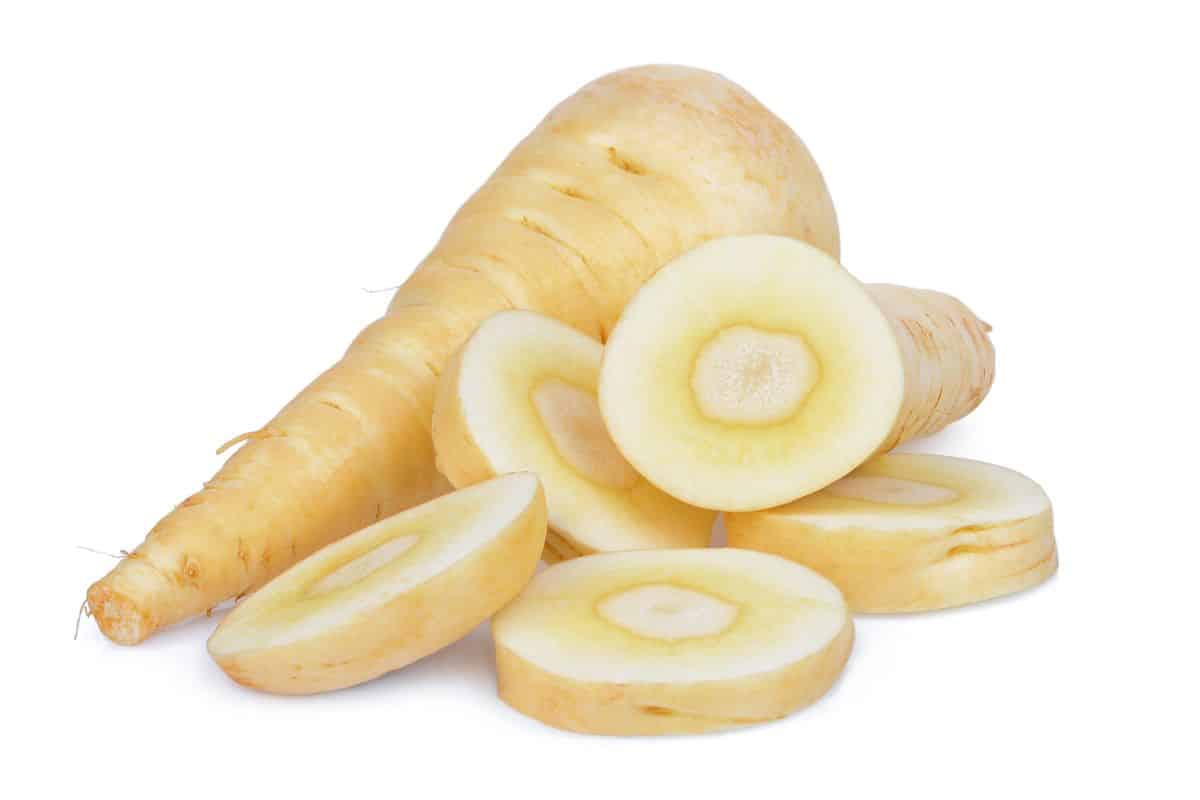
Parsnip Origin and Growing Regions: Parsnips are native to Eurasia and have a long history of cultivation, dating back to ancient times. They were a popular vegetable in Roman and medieval European cuisine. Today, parsnips are grown in various temperate regions around the world.
Parsnip Appearance and Taste: Parsnips look like creamy-white carrots and are typically tapered, with a slightly wider top. They can grow to be 12-18 inches (30-45 cm) long. Parsnips have a sweet, earthy flavor with hints of nuttiness. They become sweeter after exposure to cold temperatures, which converts their starches into sugars.
Parsnip Uses: Parsnips can be roasted, boiled, mashed, or used in soups and stews. They can be mashed like potatoes or blended into creamy parsnip puree. Roasted parsnips have a sweet, caramelized flavor that makes them a popular side dish. They are often added to soups (generally with other root vegetables), and make wonderful fires as a healthier alternative to traditional potato fries.
Peas (snow peas and sugar snap peas)
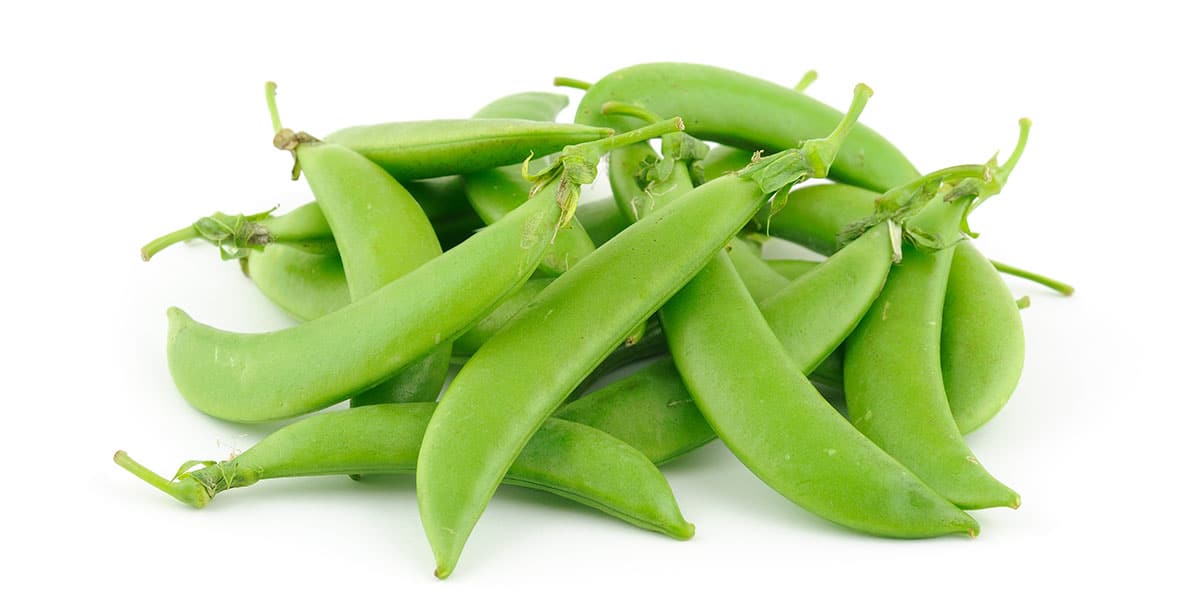
Pea Origin and Growing Regions: Peas one of the oldest cultivated crops. They are believed to have originated in the Mediterranean region and have been grown for over 7,000 years. Peas were introduced to Europe in the late Middle Ages and later spread to other parts of the world. Today, peas are grown in various regions around the world, including North America, Europe, Asia, and Africa, so pretty much the globe! They thrive in temperate climates.
Pea Appearance and Taste: Snow peas are flat and have edible pods with small peas inside. They are crisp, tender, and have a sweet, mild flavor. Sugar snap peas have plump, edible pods with fully developed peas inside. They are sweeter than snow peas and have a satisfying crunch.
Pea Uses: Snow peas are commonly used in stir-fries, salads, and as a crunchy addition to various Asian dishes. Sugar snap peas can be enjoyed as a snack, added to salads, risotto, stir-fries, vegetable medleys, are great in curry recipes, and our favorite use shepard’s pie.
Rutabaga
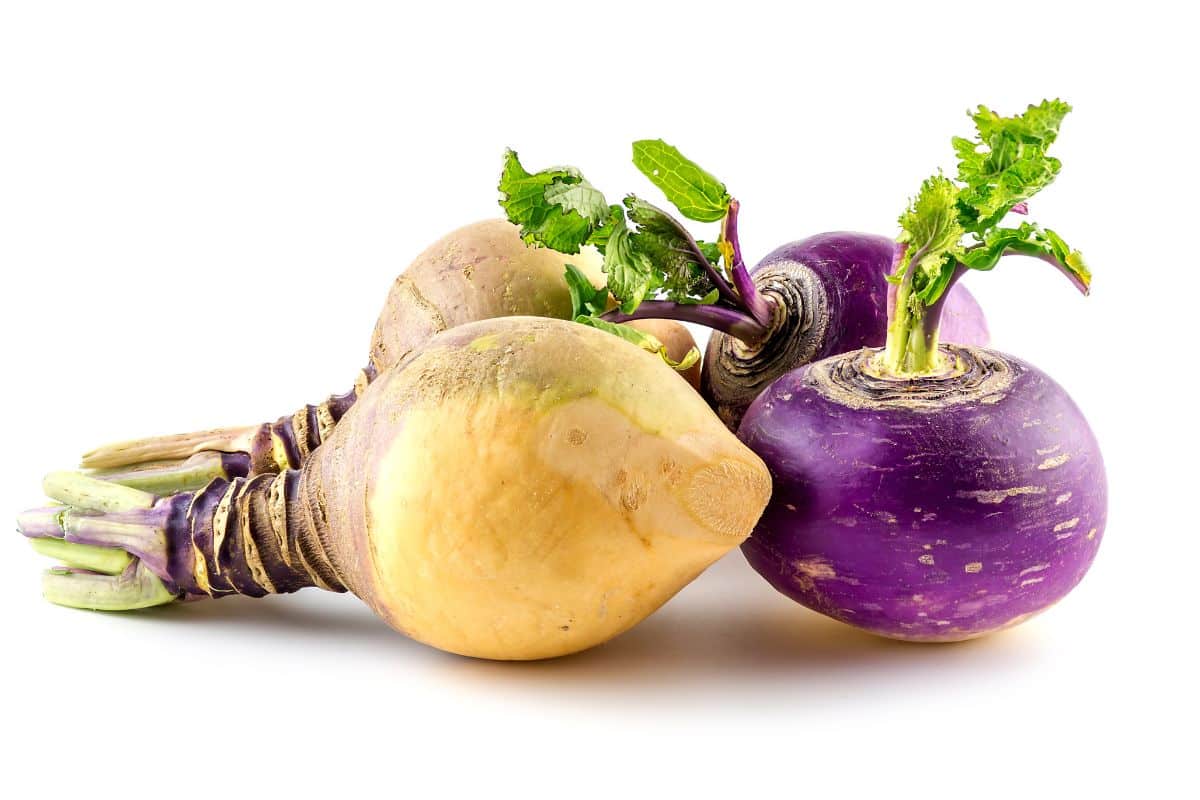
Rutabaga Origin and Growing Regions: Rutabaga is believed to have originated in Northern Europe. It is a cross between a turnip and a cabbage, and has been cultivated for centuries. Rutabagas are cultivated today in the United States, Canada, Europe, and parts of Asia. They thrive in cooler climates.
Rutabaga Appearance and Taste: Rutabagas are round or oval-shaped root vegetables with a yellow or tan skin and a pale orange or yellow flesh. They have a slightly sweet and nutty flavor with a hint of peppery undertones.
Rutabaga Uses: Rutabagas can be cooked in various ways, including roasting, boiling, mashing, or adding them to soups and stews. They are a versatile vegetable and can be used as a side dish or added to other recipes for added flavor and nutrition. If you have never tried them, give it a go with this Scottish Neeps and Tatties Recipe.
Spinach
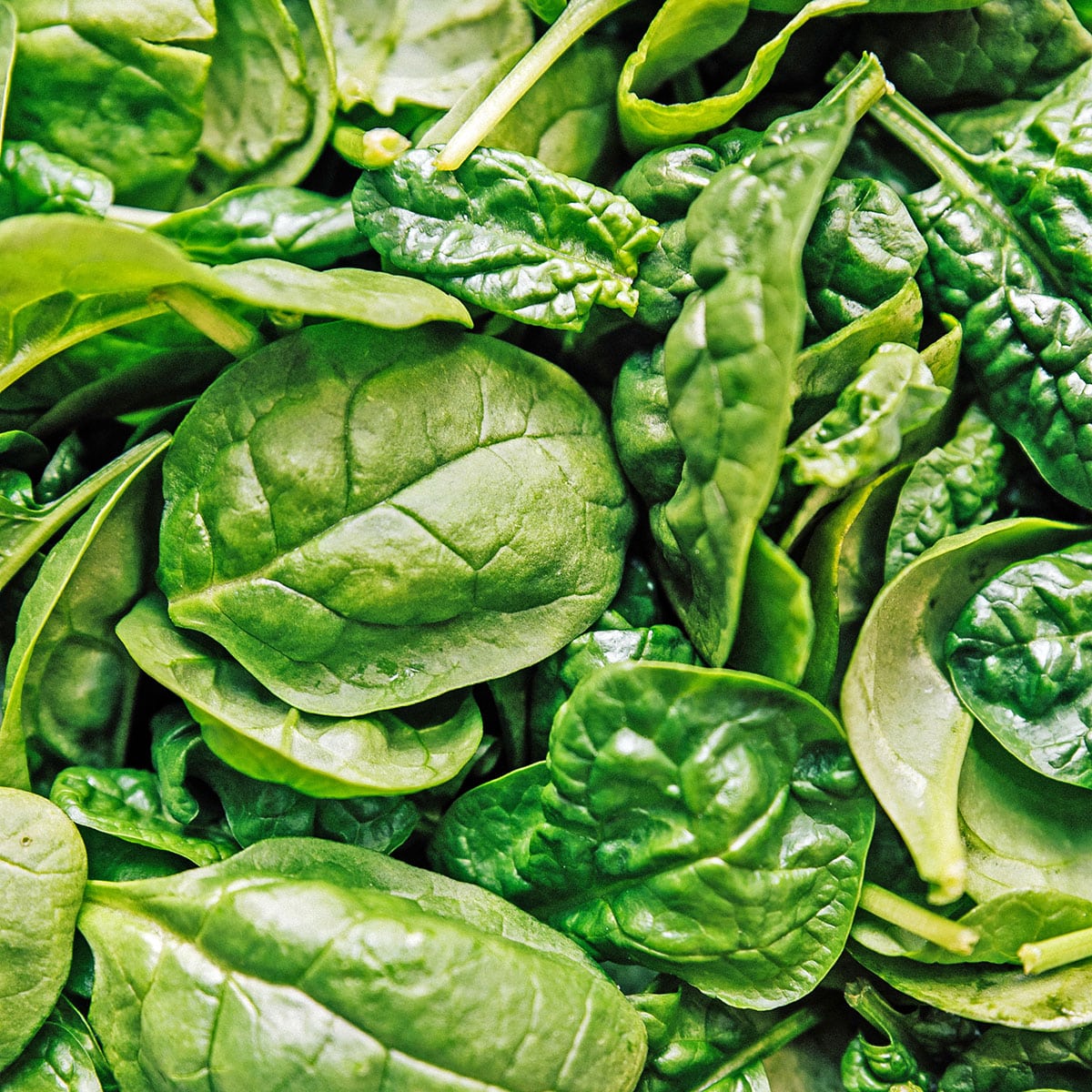
Spinach Origin and Growing Region: Spinach is believed to have originated in ancient Persia (modern-day Iran). Records show that It appeared in China in the 7th Century, and was brought to Europe in the 11th. It was introduced to Europe by the Moors, Muslims who inhabited modern day Spain from the 8th to 16th Century. Today, spinach is grown in many parts of the world, with major production areas in the United States, China, and India. It prefers cool, mild climates.
Spinach Appearance and Taste: Spinach leaves are flat, green, tender, and have a mild, slightly earthy flavor. Baby spinach leaves are especially delicate and are often used in salads. When cooked, spinach leaves shrink in size and become limp.
Spinach Uses: Spinach is incredibly versatile and can be used in various dishes, including salads, sandwiches, smoothies, and cooked dishes like sautés, quiches, and pasta dishes. It’s known for its high nutritional value and is a good source of vitamins and minerals, especially iron and calcium.
Turnip
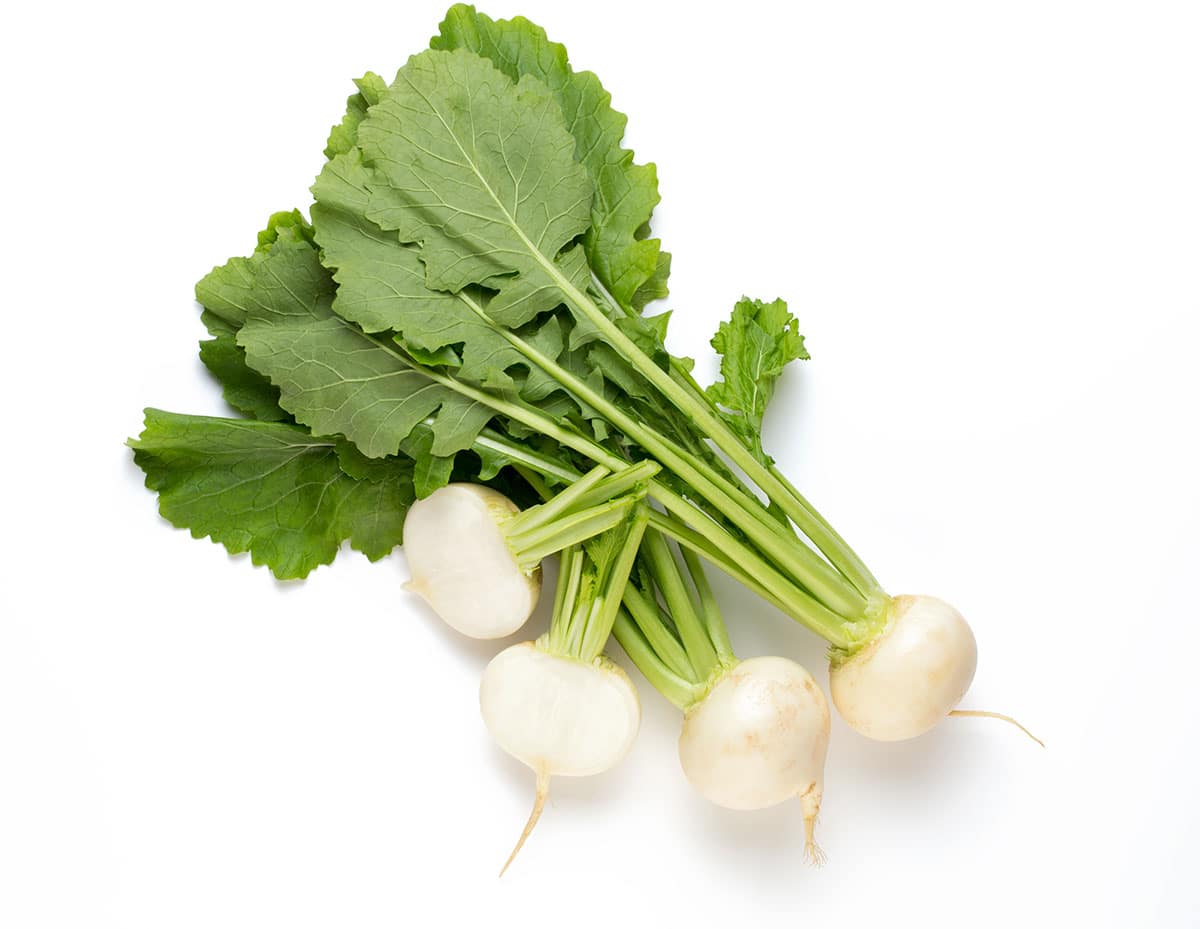
Turnip Origin and Growing Region: Turnips are believed to have originated in the eastern Mediterranean and were one of the first vegetables to be cultivated in ancient times. Cultivated turnips were derived from wild turnips, which was quite common as nomadic people settled and began planting crops vs foraging for them. They were eaten by the Ancient Greeks and Romans, and played a significant role in European diets during the Middle Ages and beyond, as they were easy to grow, thrived in cold climates, and provided a reliable source of sustenance. They were commonly used as animal fodder, but served as a dietary staple during times of scarcity like wars and famines. They are nearly a world-wide vegetable today.
Turnip Appearance and Taste: Turnips are root vegetables that come in various shapes, including round and cylindrical. They typically have a white or cream-colored flesh and a purple or white skin, although some varieties are entirely white. The taste of turnips can vary, but they are often described as having a mildly peppery and slightly bitter flavor when raw. Cooking turnips can mellow their flavor, making them slightly sweet with a tender texture.
Turnip Uses: Turnips can be eaten raw in salads or even sliced as a crunchy dipping snack. They are commonly cooked by boiling, roasting, or sautéing and are often used in soups, stews, and mashed potato dishes. Turnip greens, the tops of the plants, are also edible and can be used in salads or cooked like spinach or collard greens.
Watercress

Watercress Origin and Growing Region: Watercress is native to Europe and Asia. It has a long history of culinary and medicinal use, dating back to the ancient Greeks and Romans. In fact, watercress is believed to be one of the oldest leafy greens eaten by humans before growing to nearly world-wide use. Watercress was popularized in the 19th century as a nutritious addition to salads.
Watercress Appearance and Taste: Watercress is a leafy green aquatic plant that grows in shallow, running water. It is part of the family of mustard and cabbage giving it its small dark green leaves with a distinct spicy, peppery and slightly pungent flavor. The stems are hollow, and the plant has a crisp and refreshing texture.
Watercress Uses: Watercress is commonly used in salads, adding a peppery kick and vibrant green color. It can also be used as a garnish for soups and sandwiches. Due to its strong flavor, it’s often used sparingly or mixed with milder greens to balance the taste. It can, however, take center stage and be the main ingredient in a citrus watercress salad. While is it always recommended to wash fruits and vegetables before use, it particularly important with watercress as it often comes to your grocery with sand still clinging to it.
Winter Squash
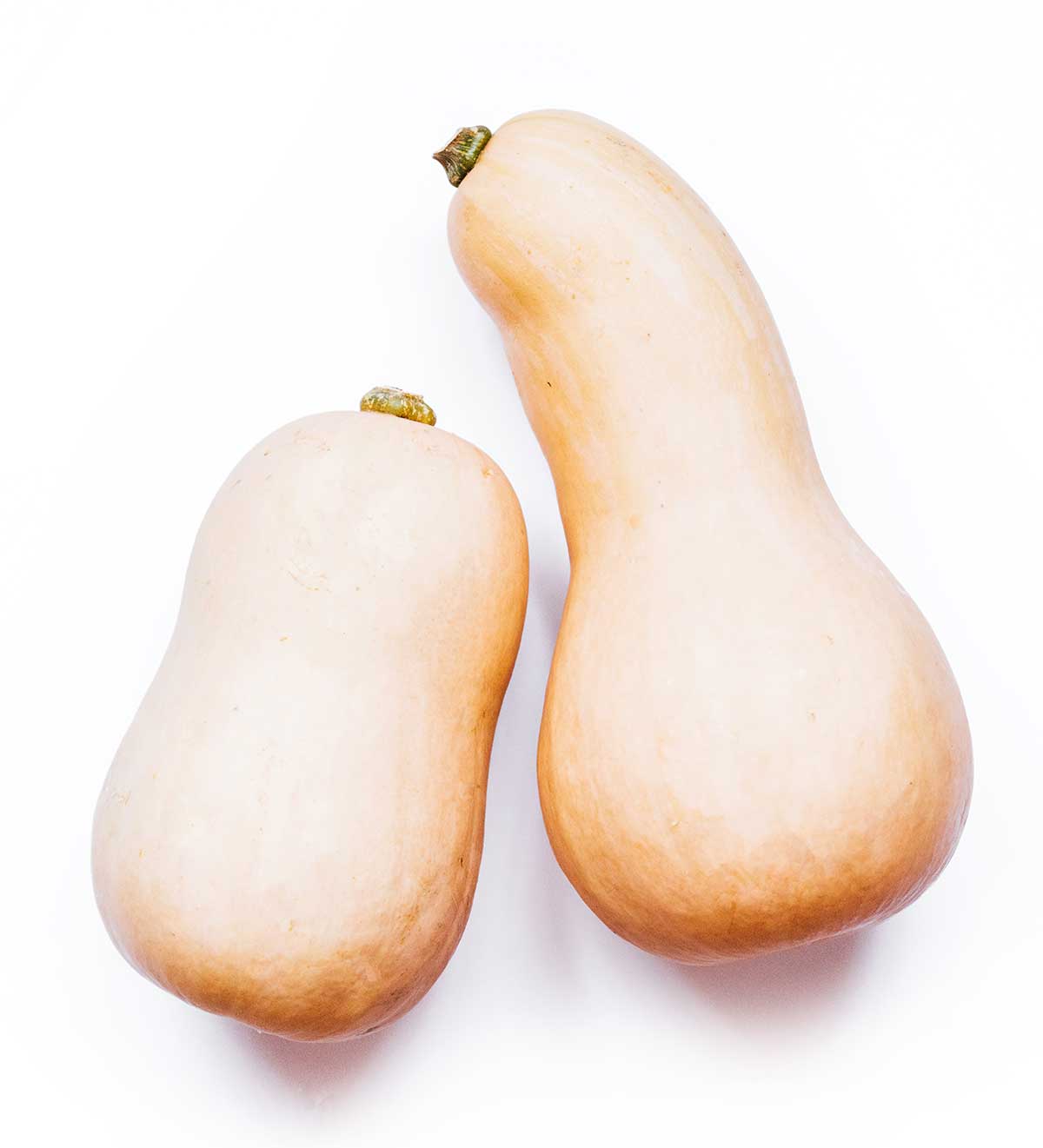
Winter Squash Origin and Growing Region: Winter squash is a broad category of squash varieties that are typically harvested in the late summer or fall and can be stored for consumption during the winter. Various types of winter squash, such as butternut, acorn, and spaghetti squash, have their origins in the Americas, with indigenous peoples cultivating them for centuries. European explorers introduced these squashes to Europe in the 16th century which is when the types of squash began to grow with hybrids developed over the next 500 years.
Winter Squash Appearance and Taste: Winter squash come in a variety of shapes, sizes, and colors, ranging from deep orange to green or tan. They have a sweet, nutty flavor and a dense, firm flesh. The taste and texture of different varieties can vary, but they are generally rich and satisfying. They are different from most summer squashes in that their skins are thicker and not usually eaten. As with most foodie things, there are exceptions. acorn squash, a winter squash, has a perfectly edible skin.
Winter Squash Uses: Winter squash can be roasted, baked, steamed, or even used in soups and stews. Butternut squash is often used for making creamy soups, while acorn squash can be roasted or stuffed. Our favorite winter squash, however, is probably spaghetti squash. When cooked, spaghetti squash yields strands that resemble pasta, making it a low-carb alternative to traditional pasta.
That wraps up our look at vegetables that grow in the winter. We used a fairly liberal interpretation of what constitutes a winter vegetable because so many of these are now available fresh year round. As always, happy cooking from your friends at Live Eat Learn.
Trivia Answer
The record pumpkin weighed in at 2,157 pounds and was grown in Palmer Alaska in 2022.
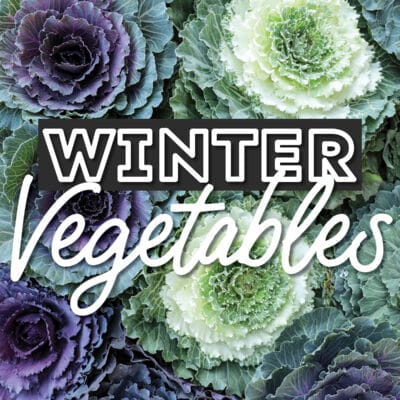
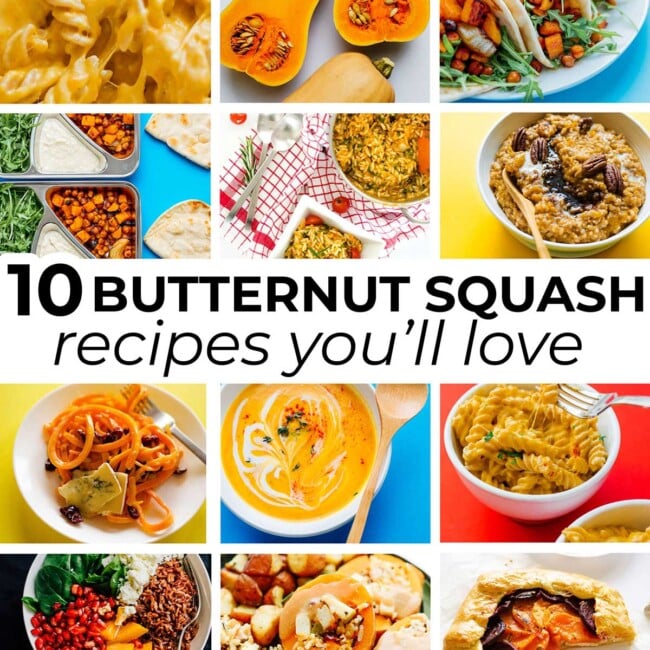



Leave a Comment